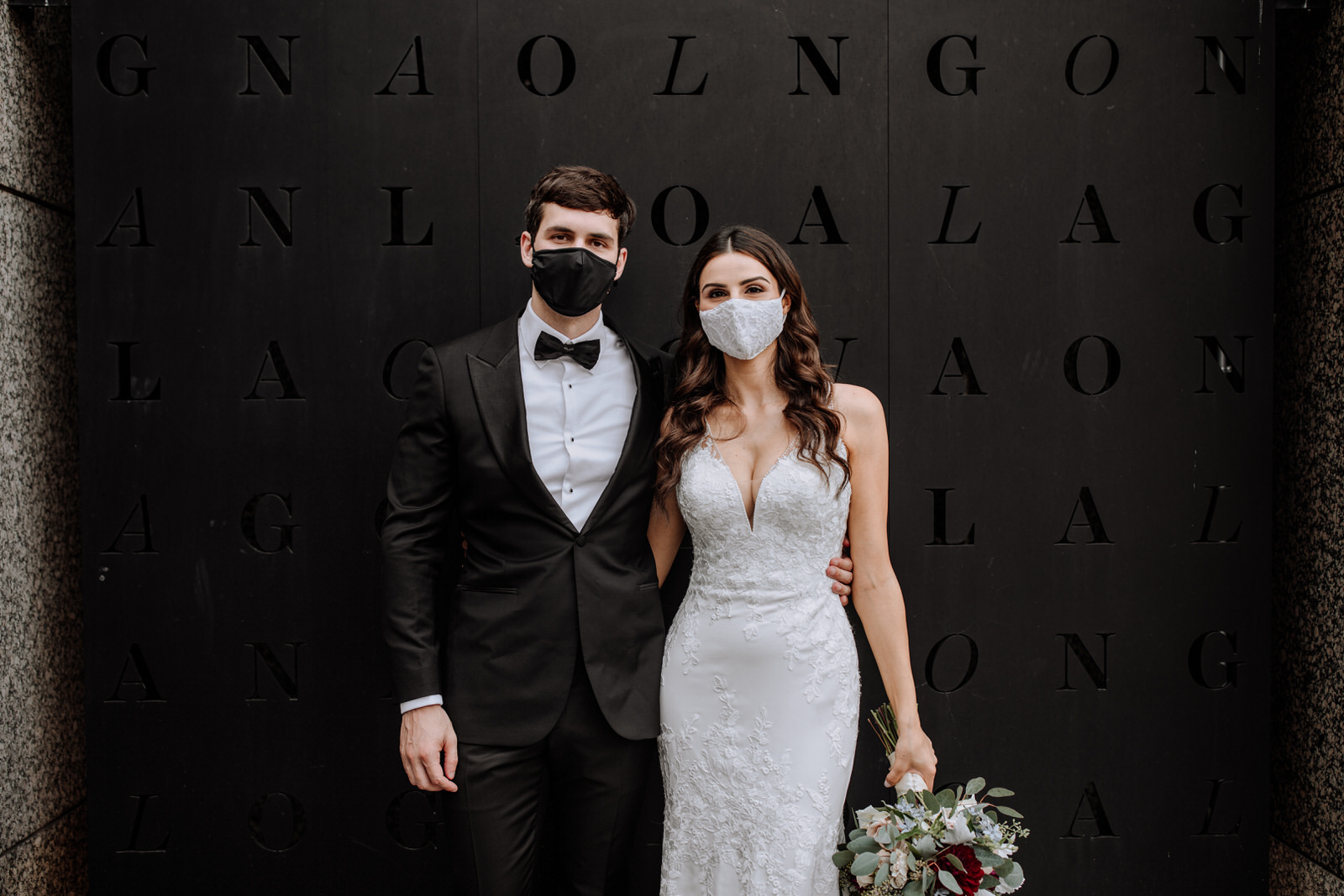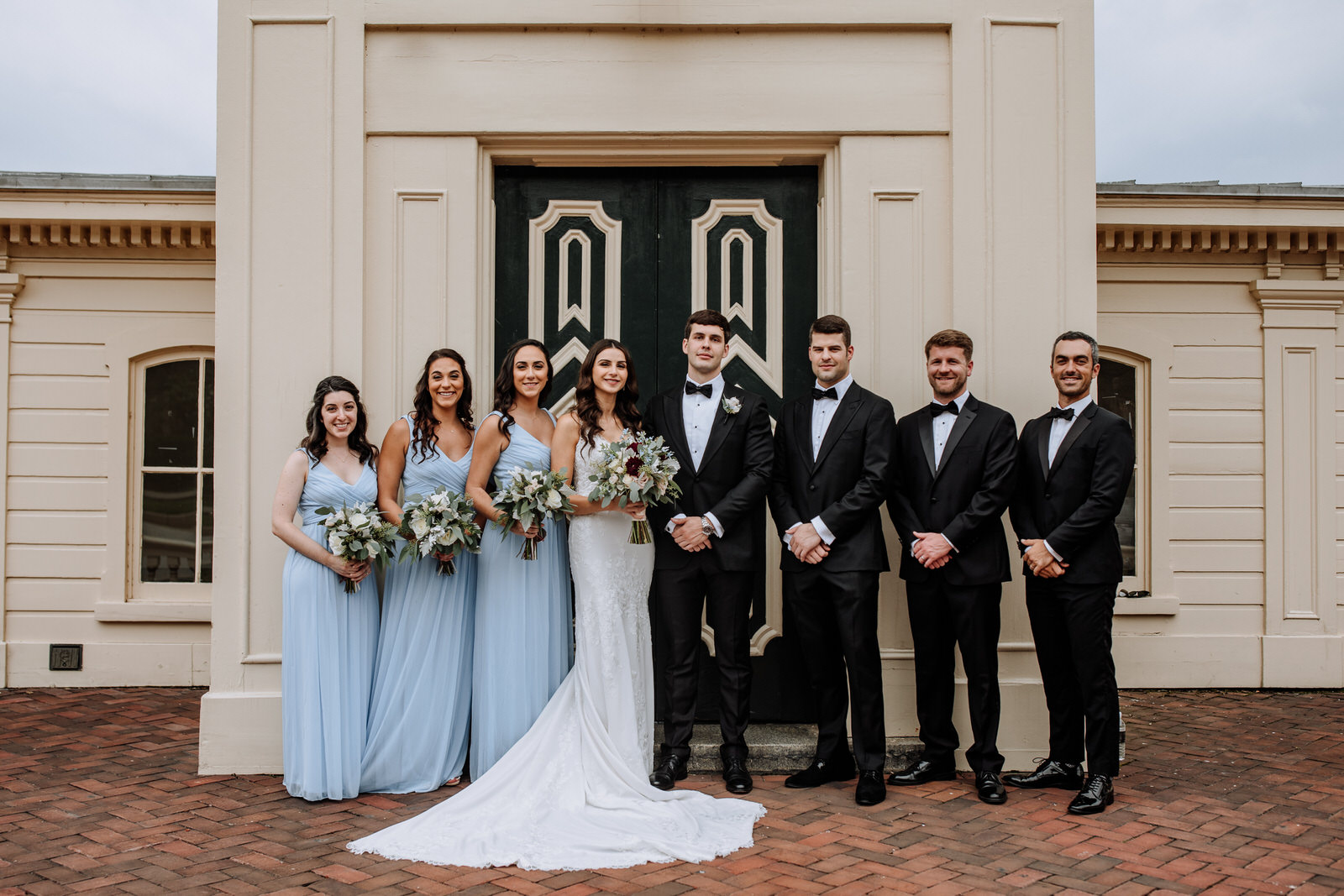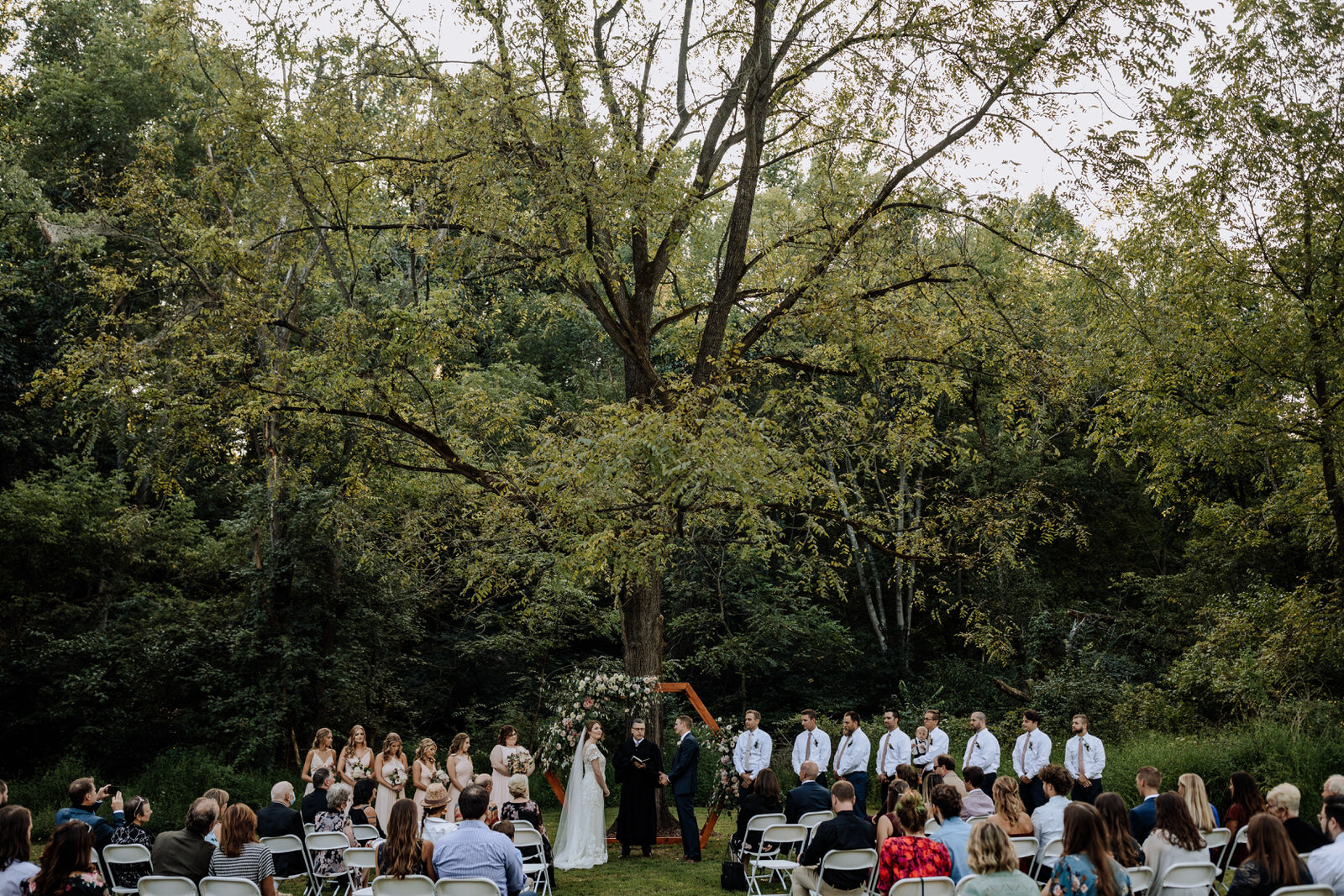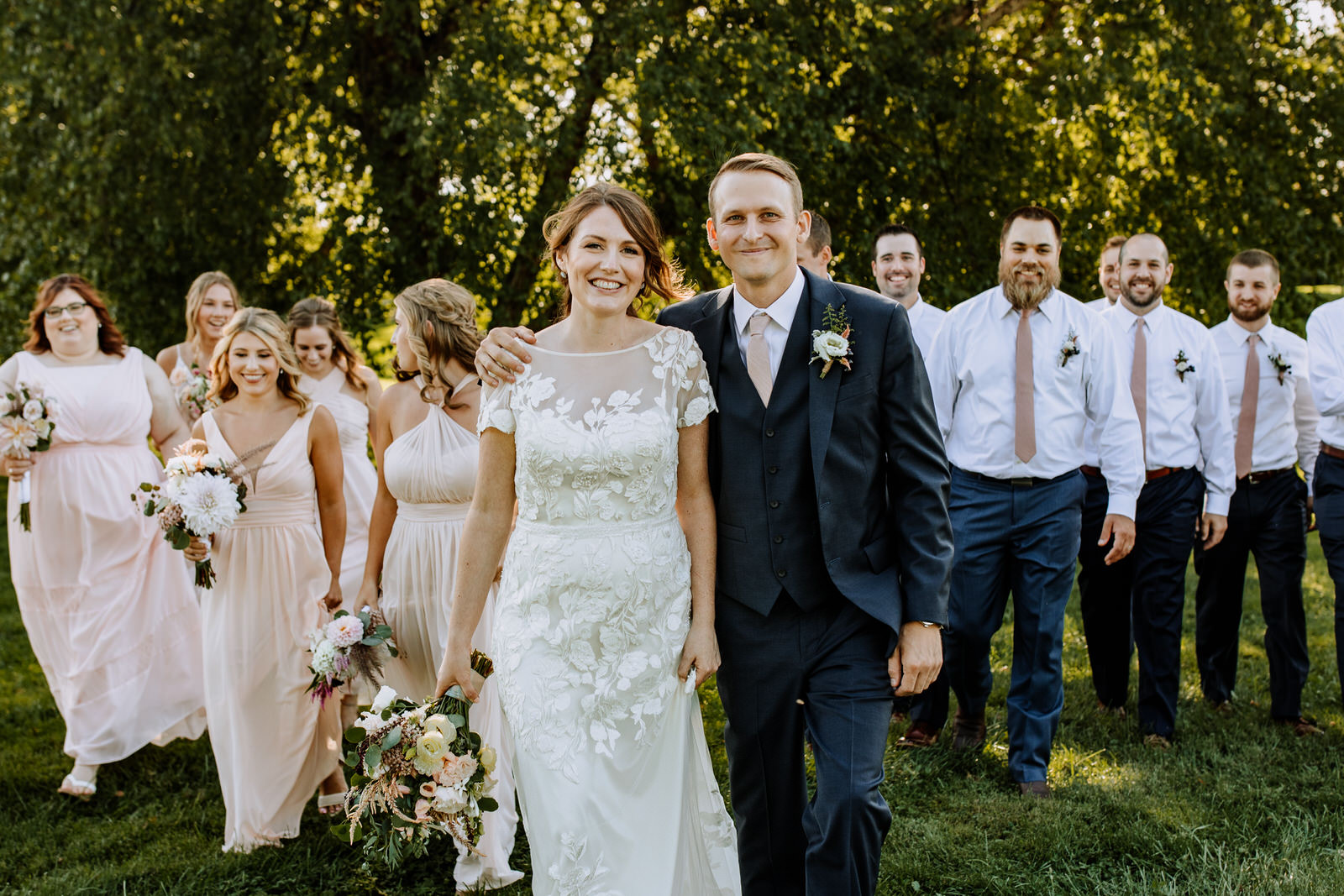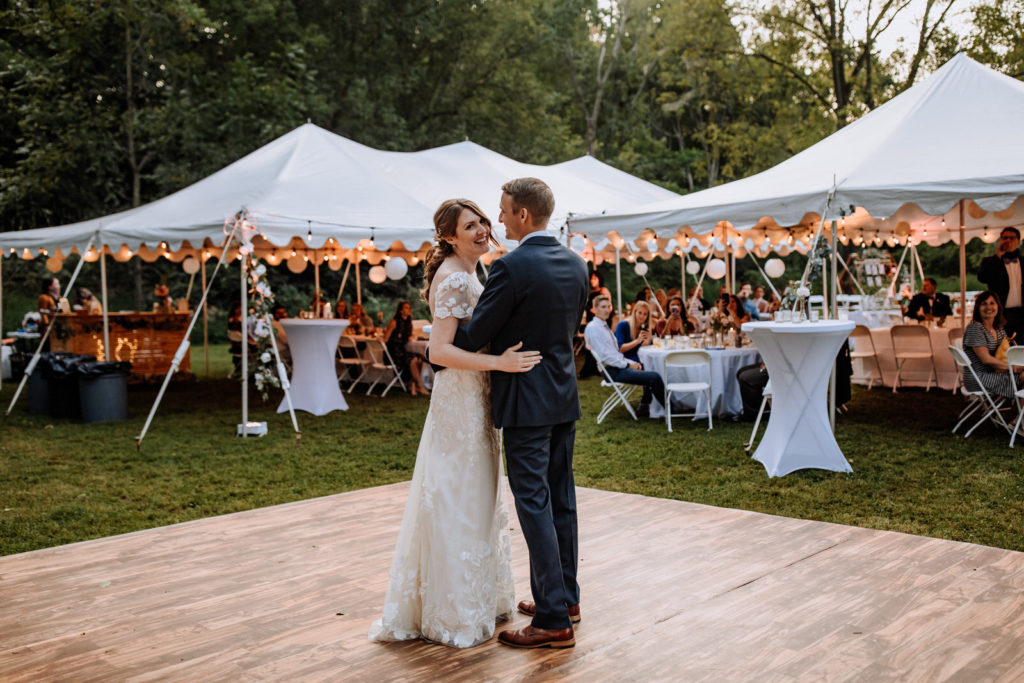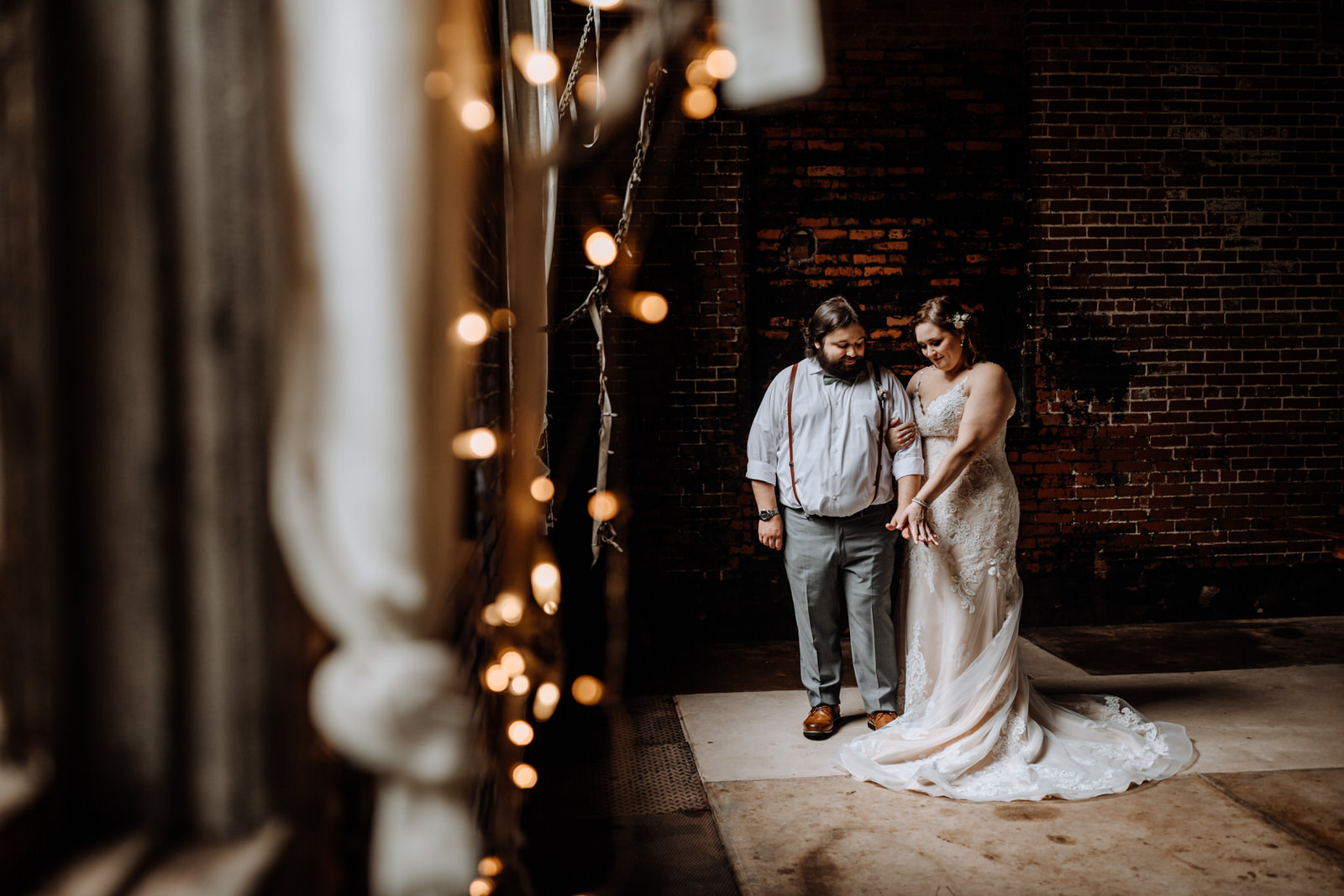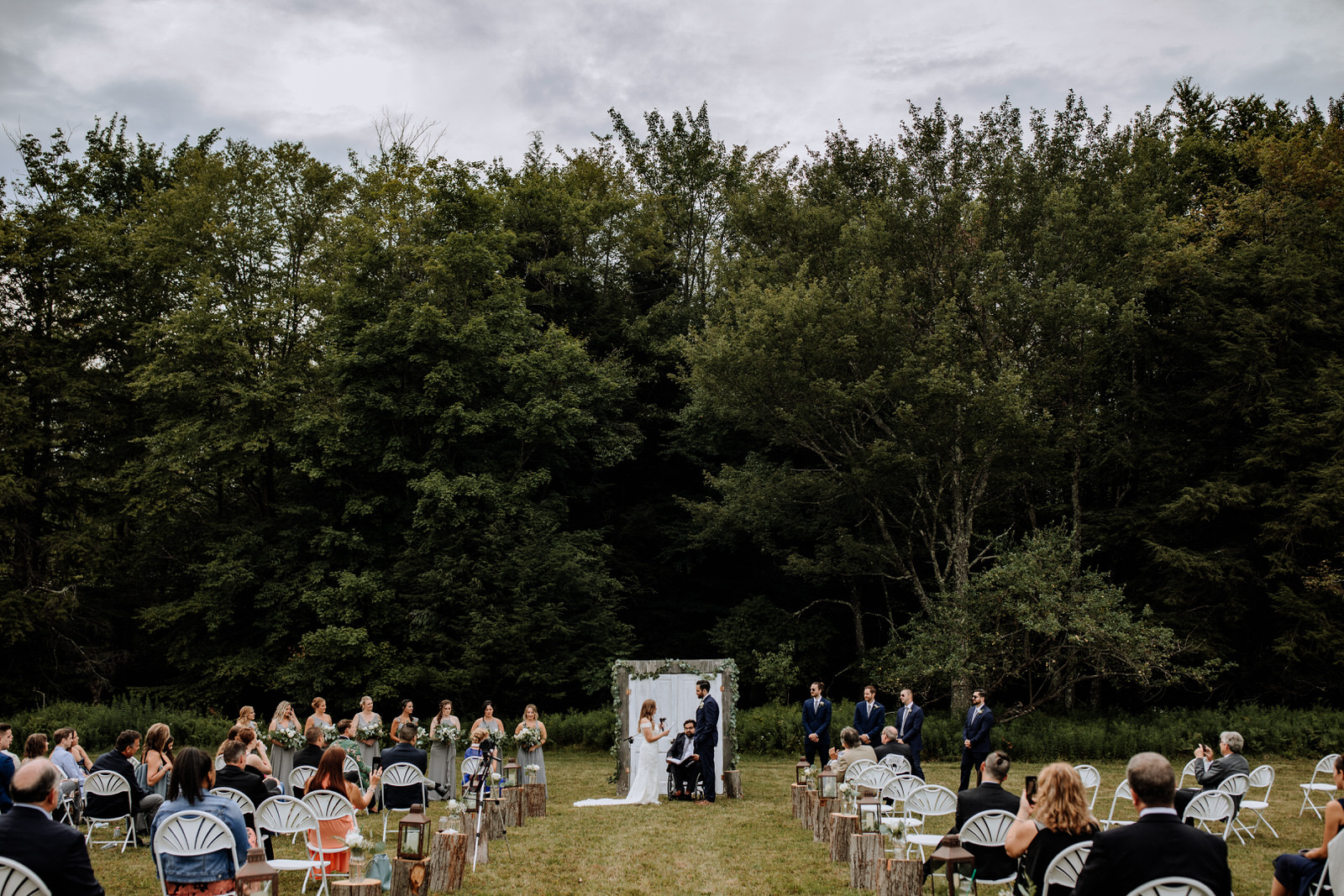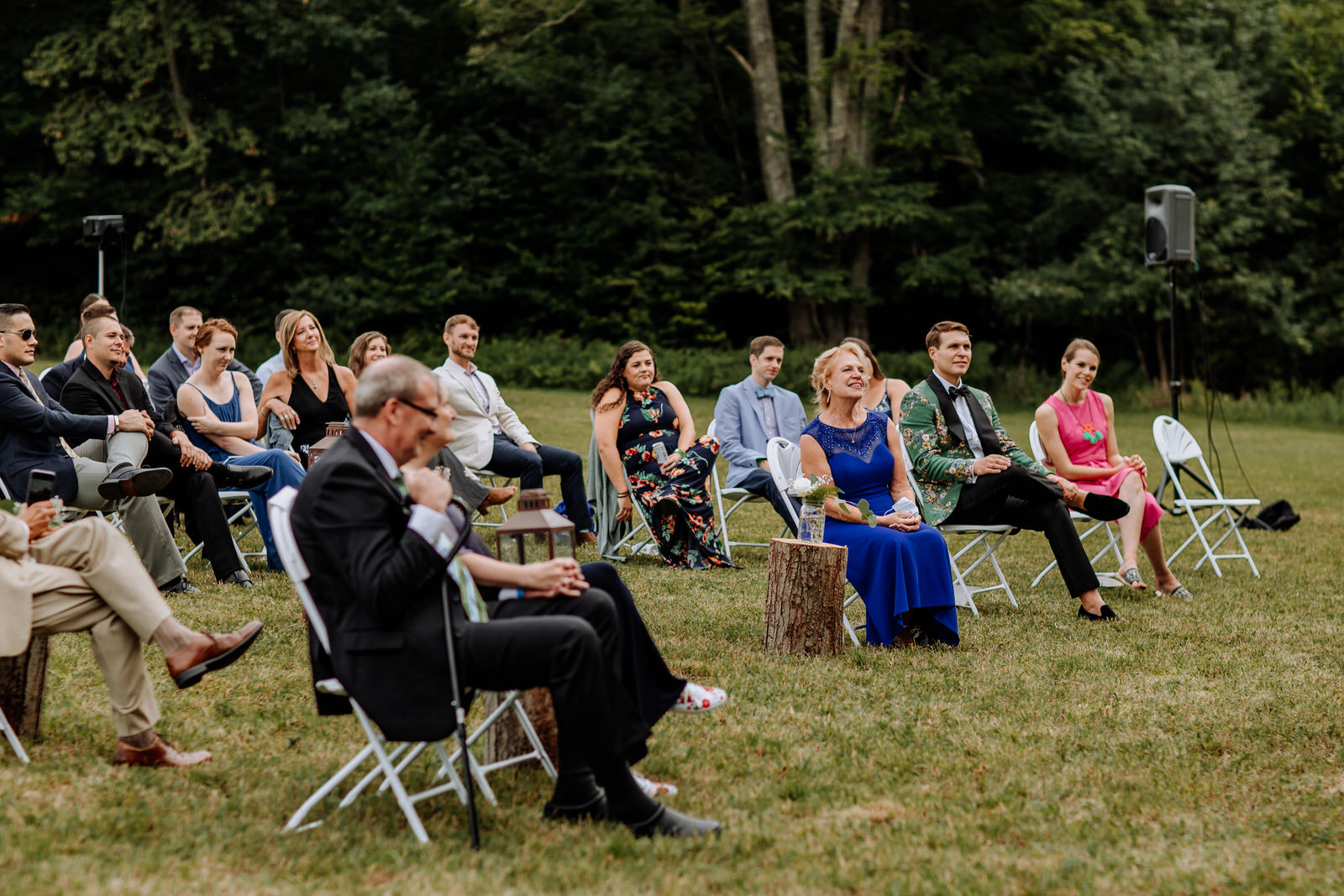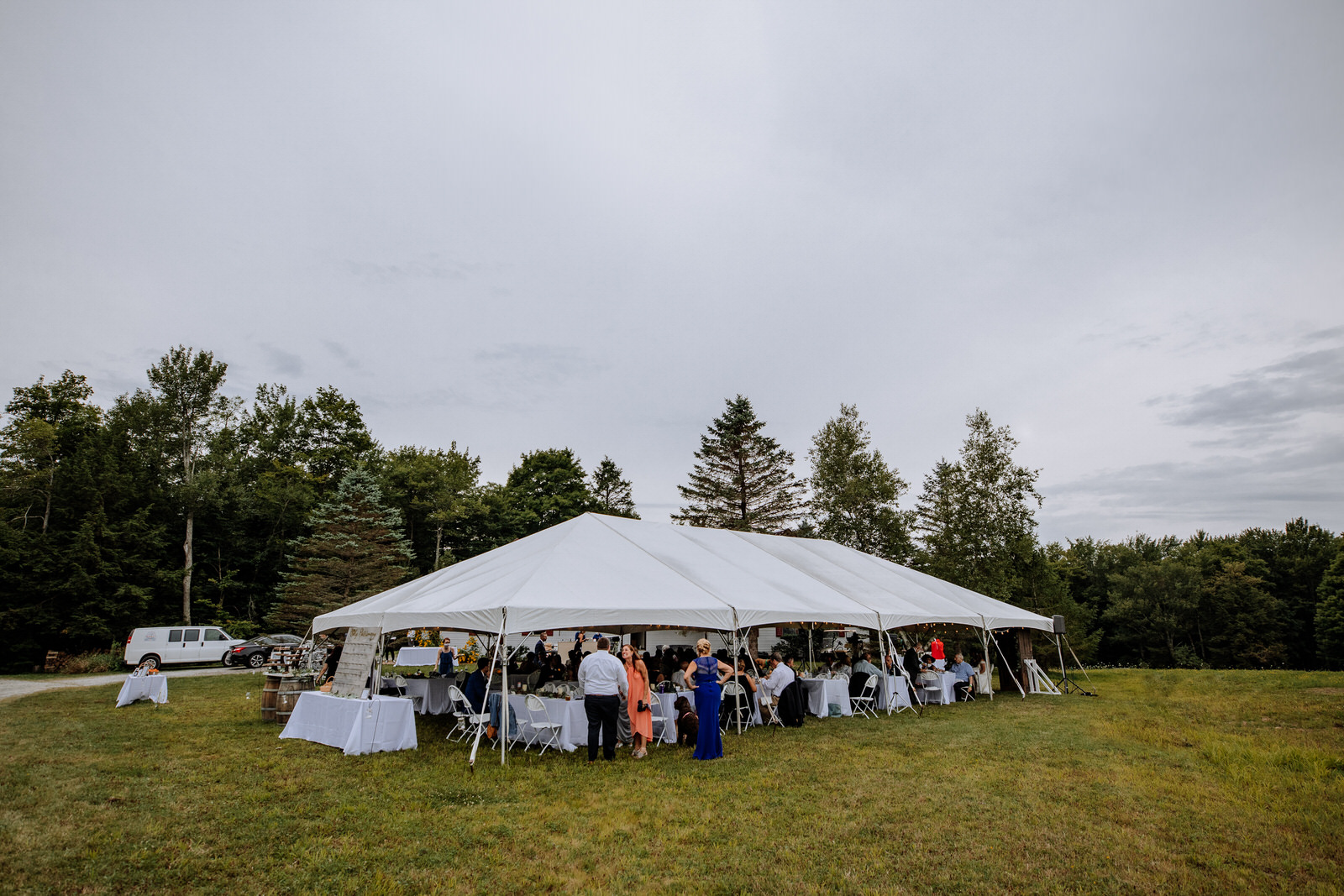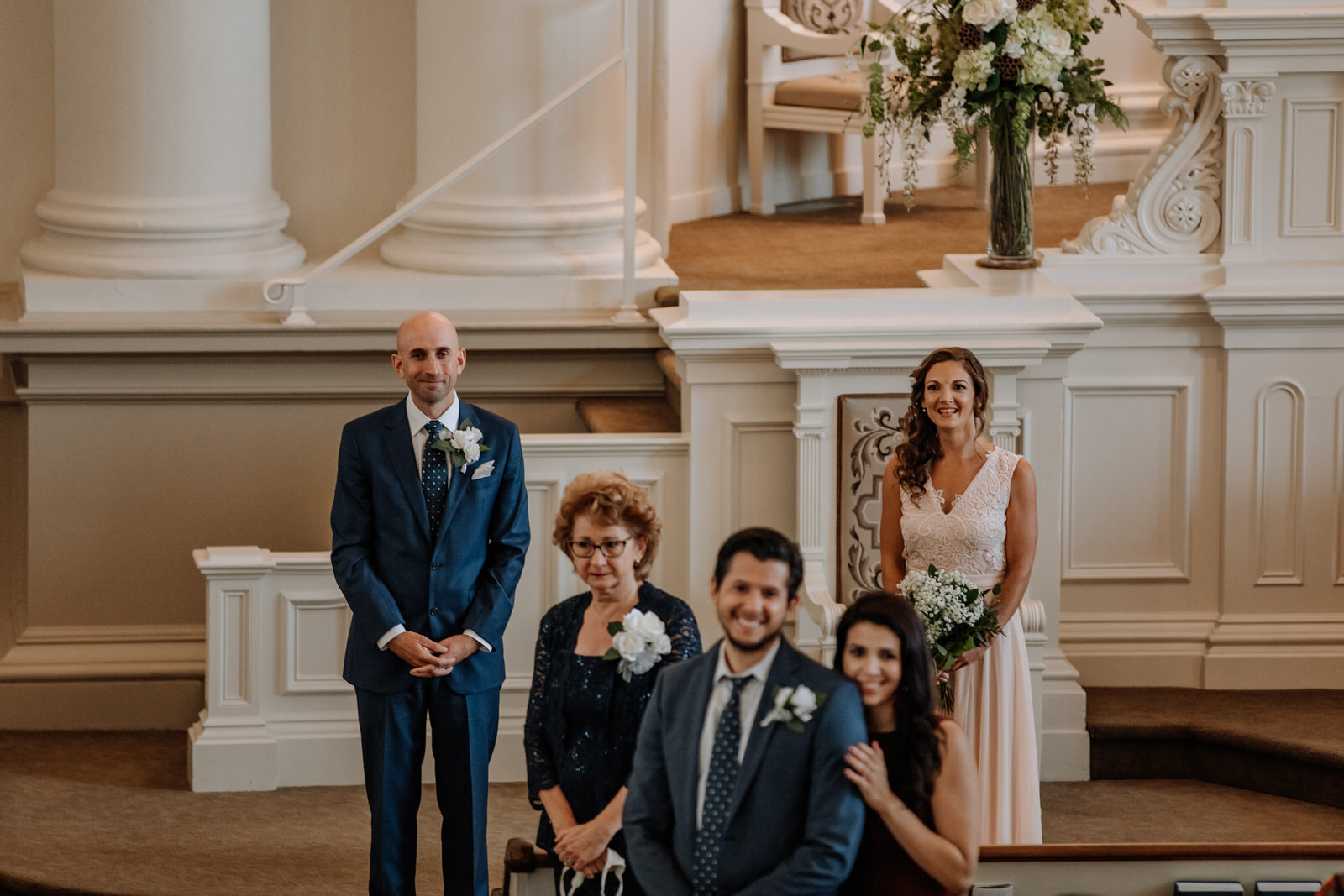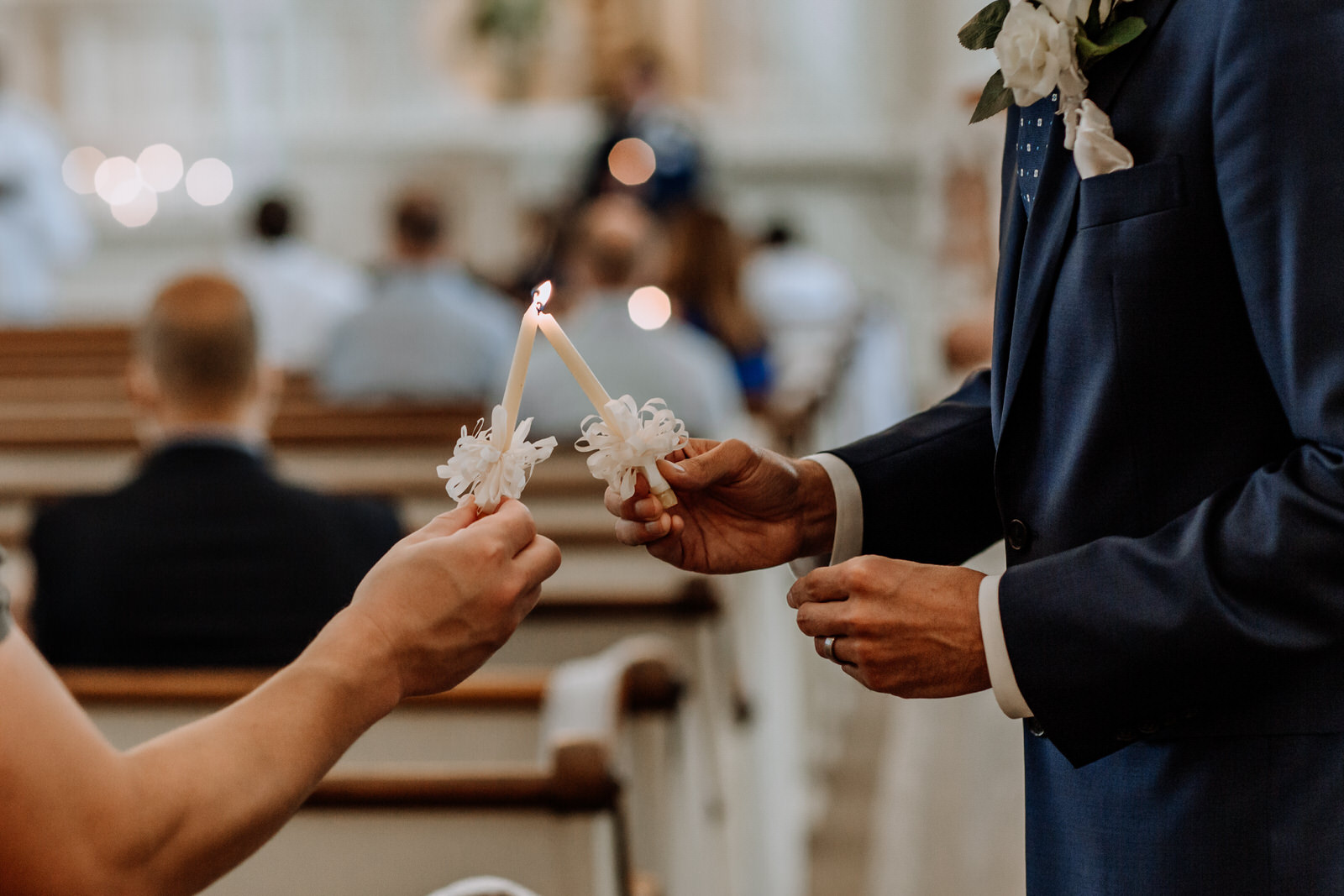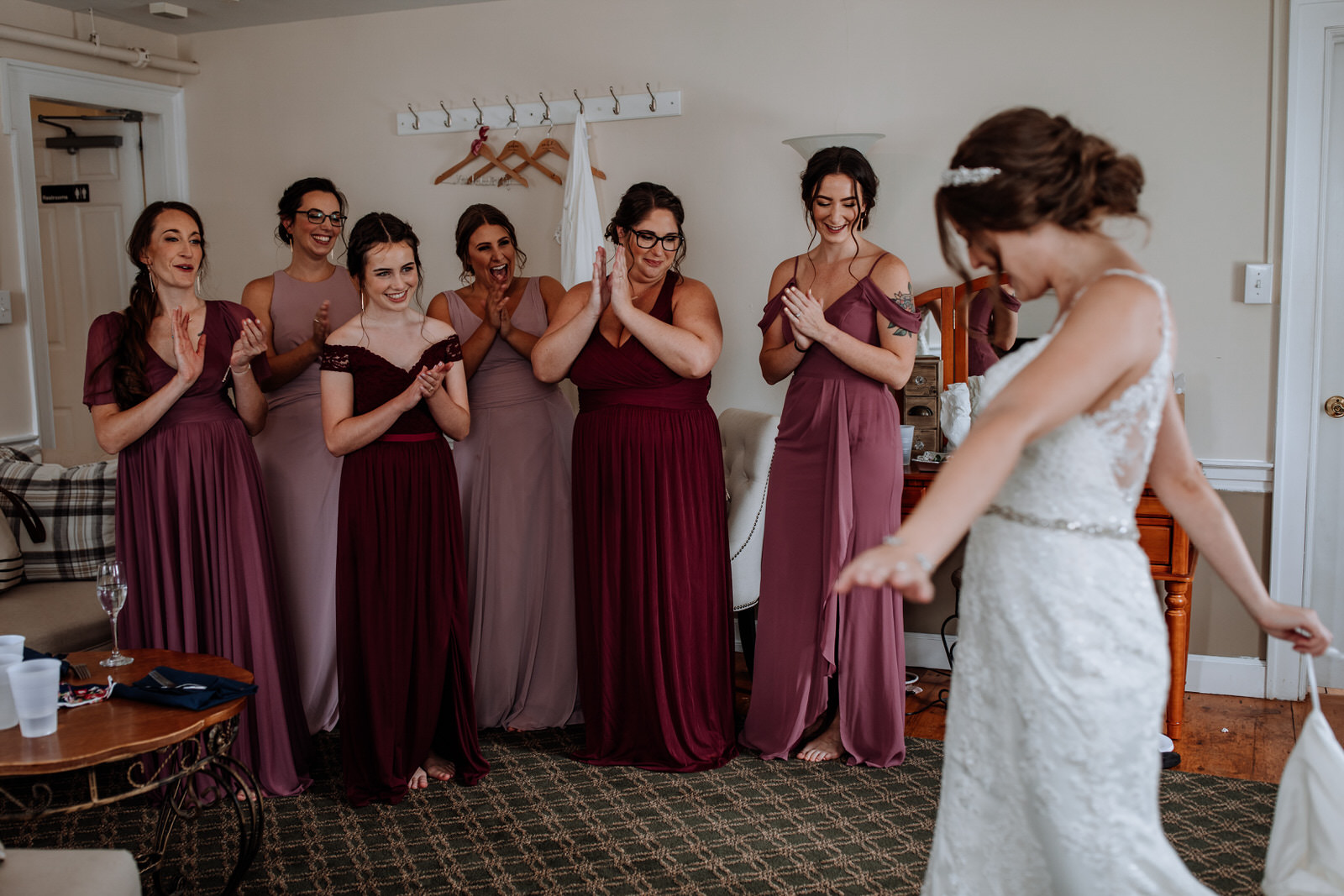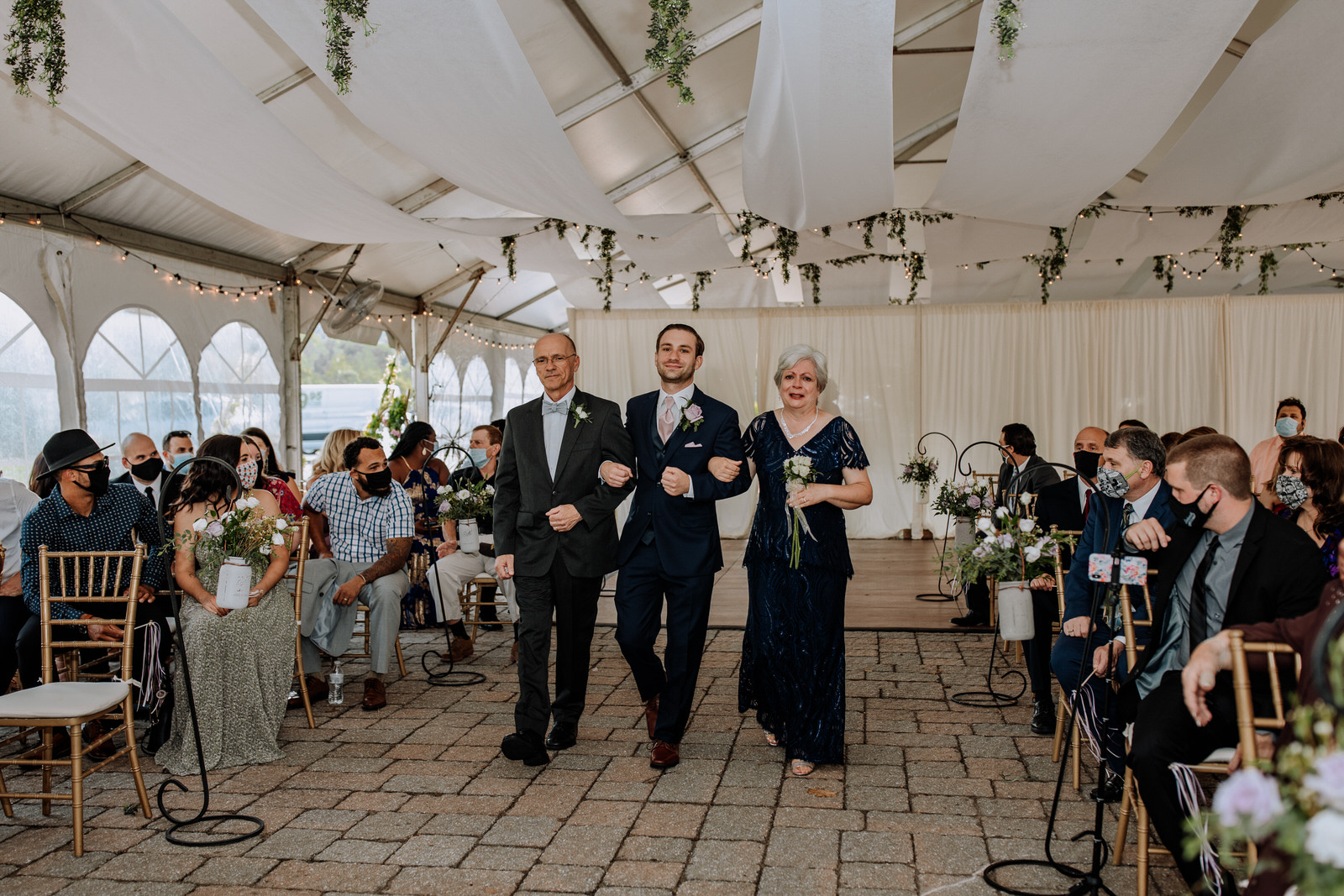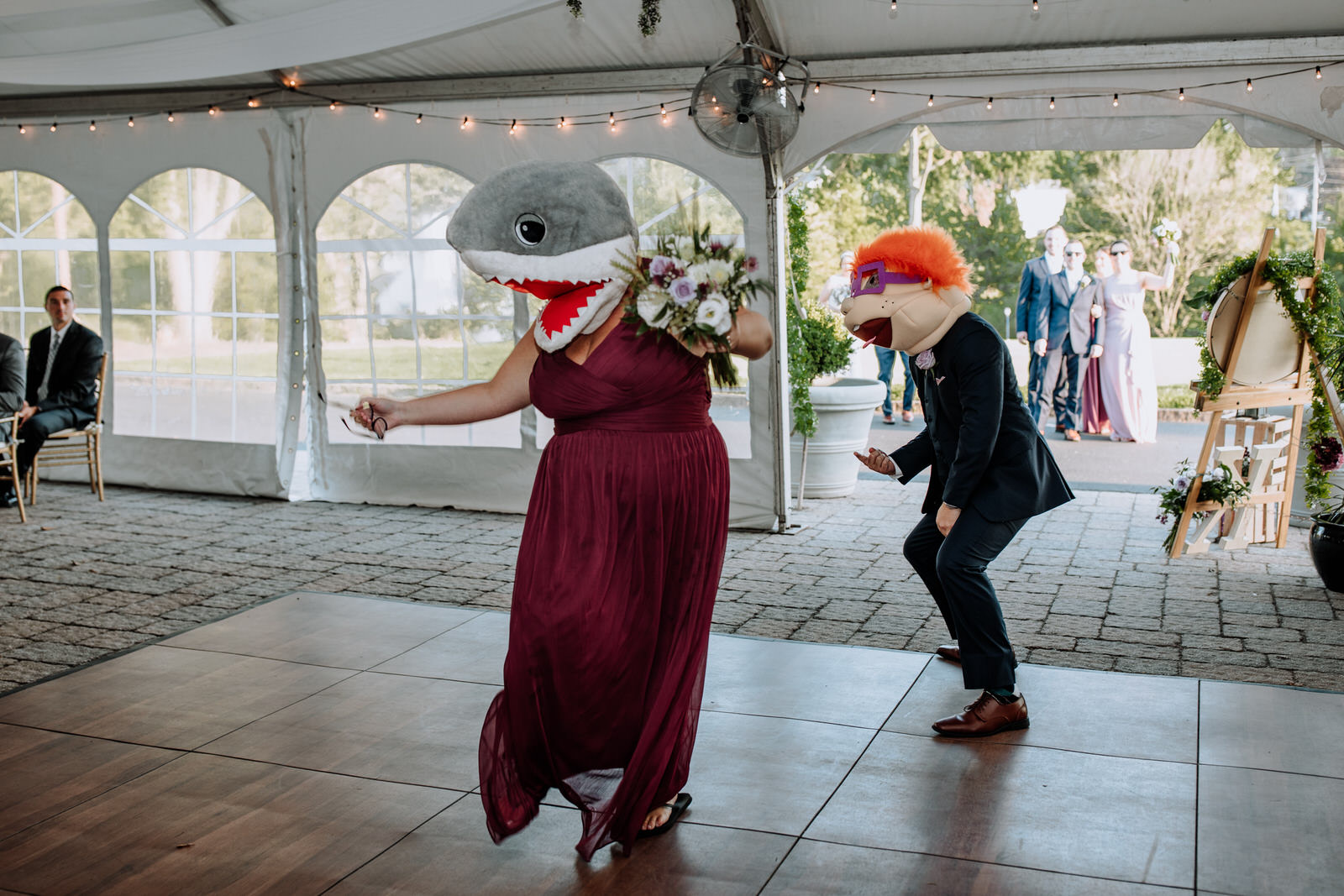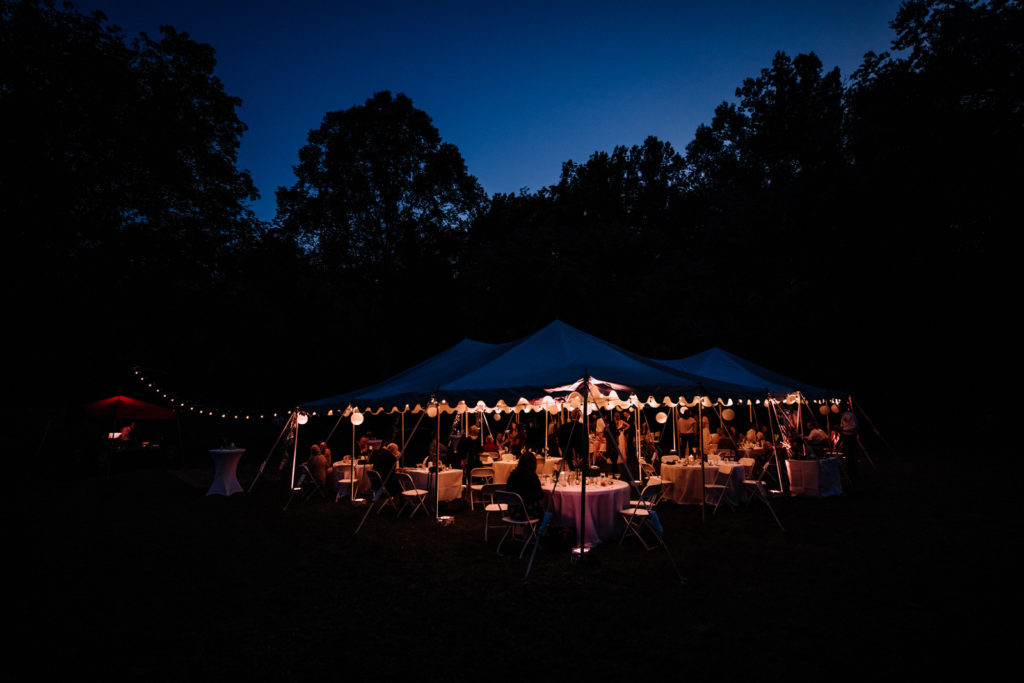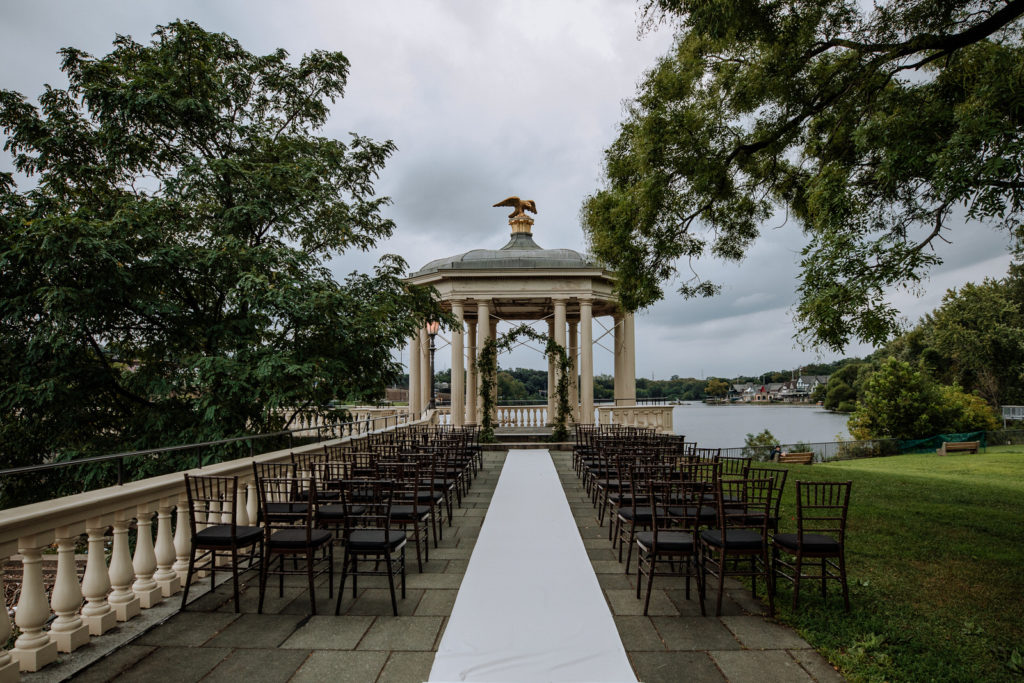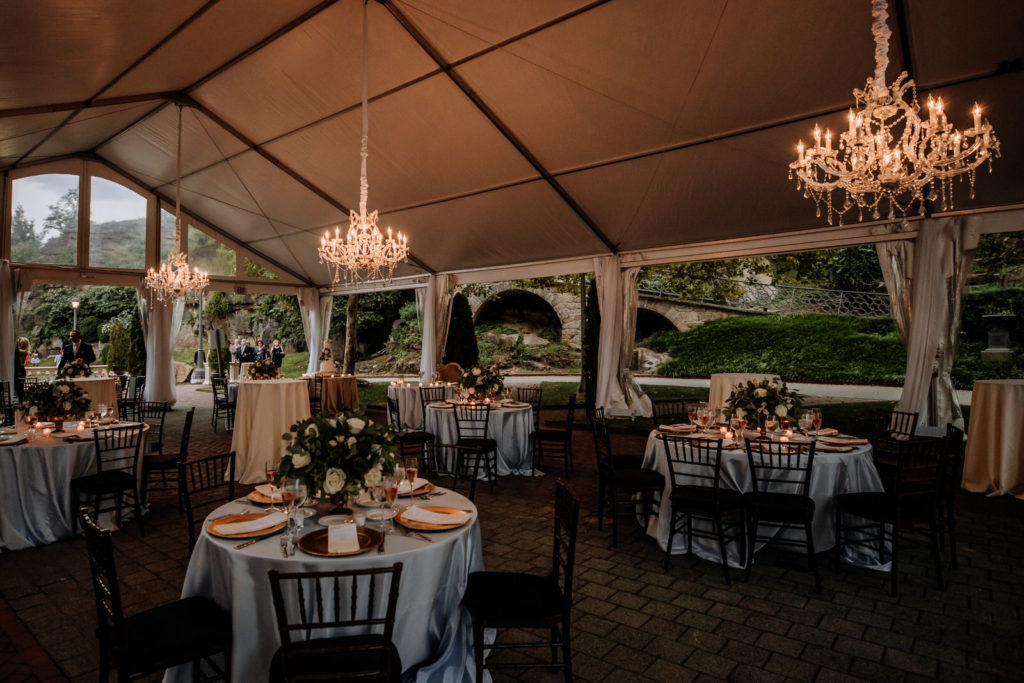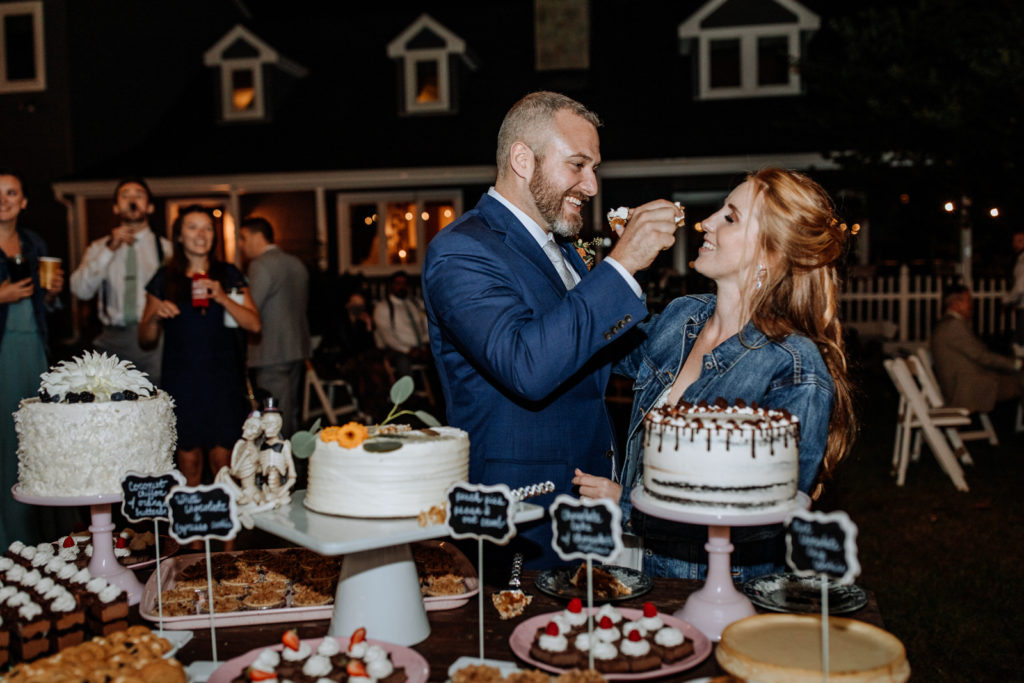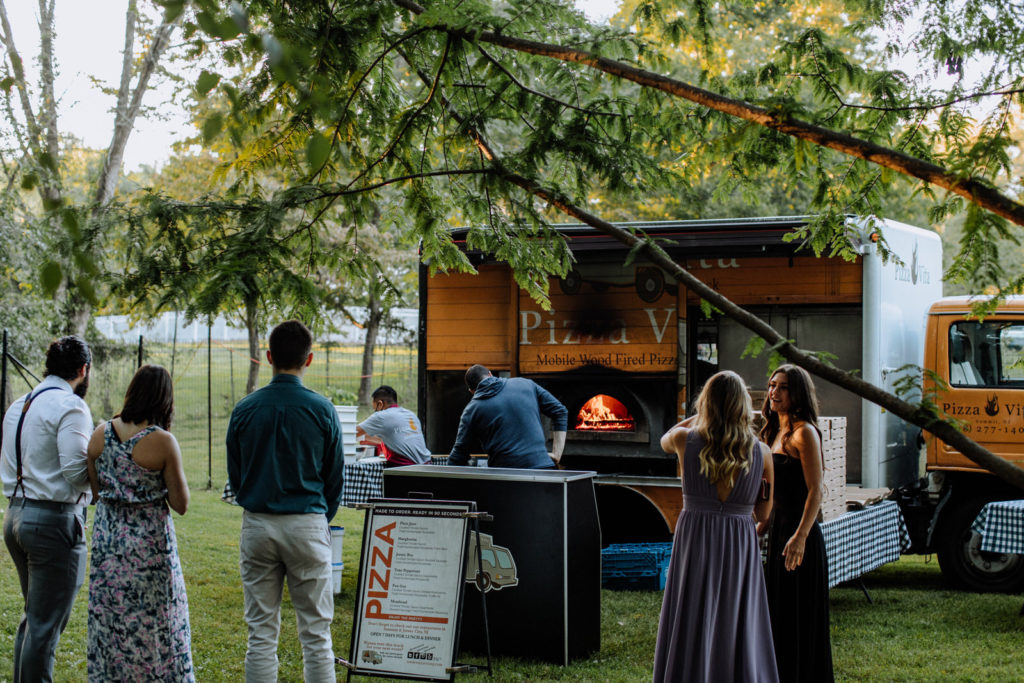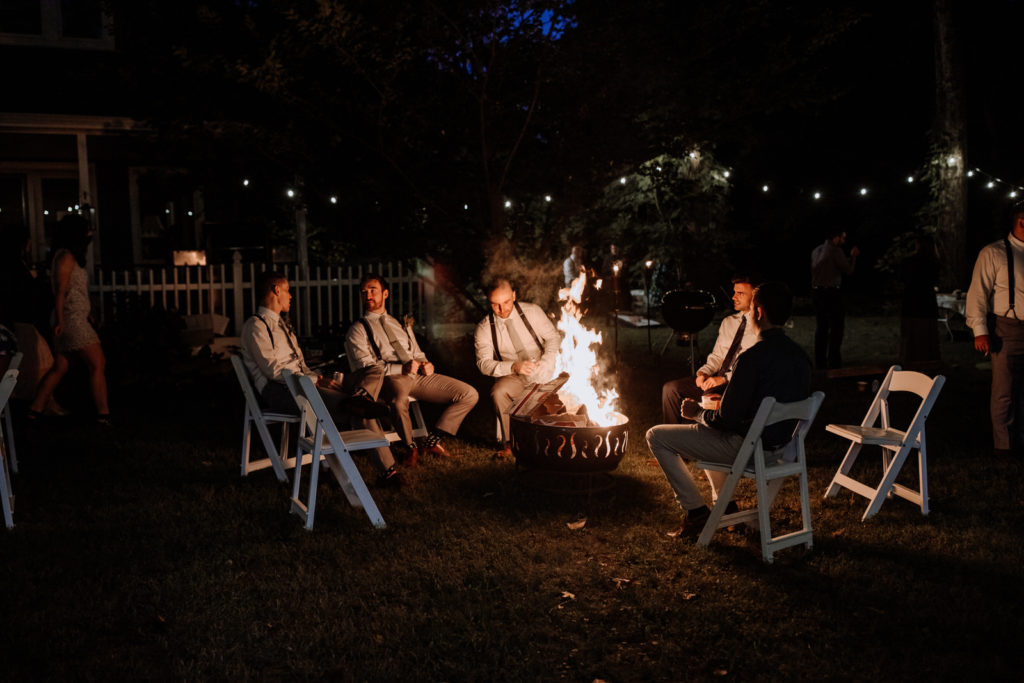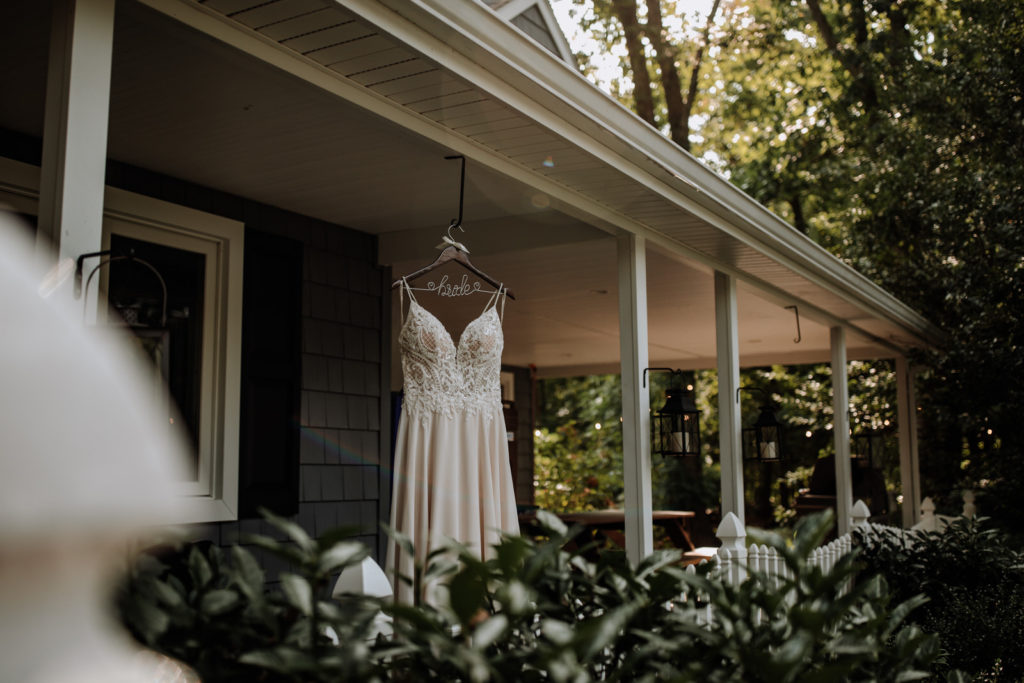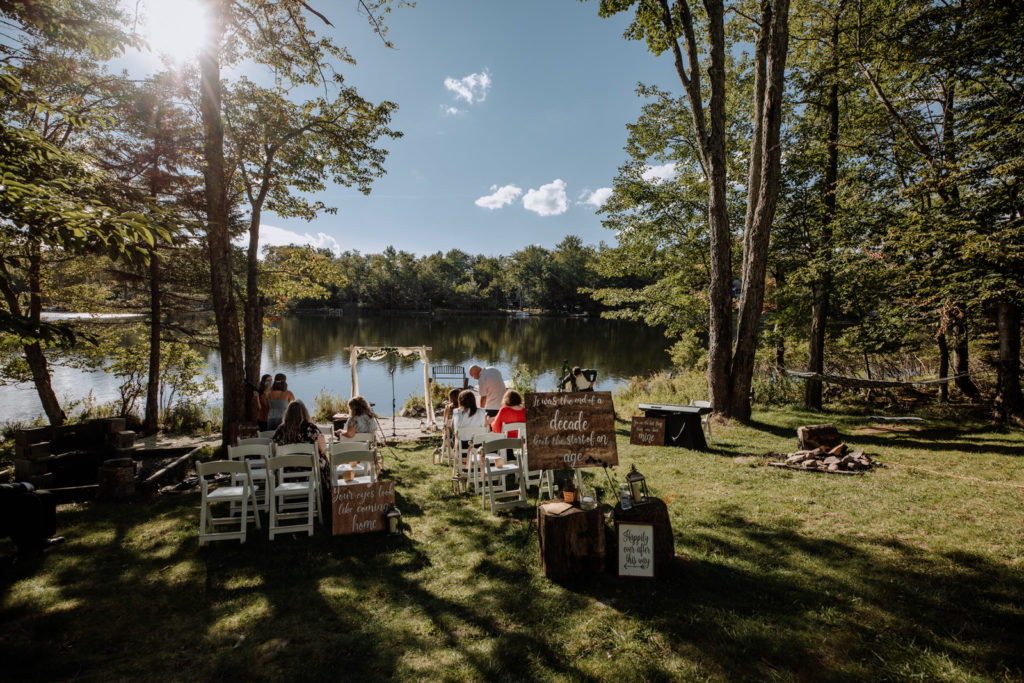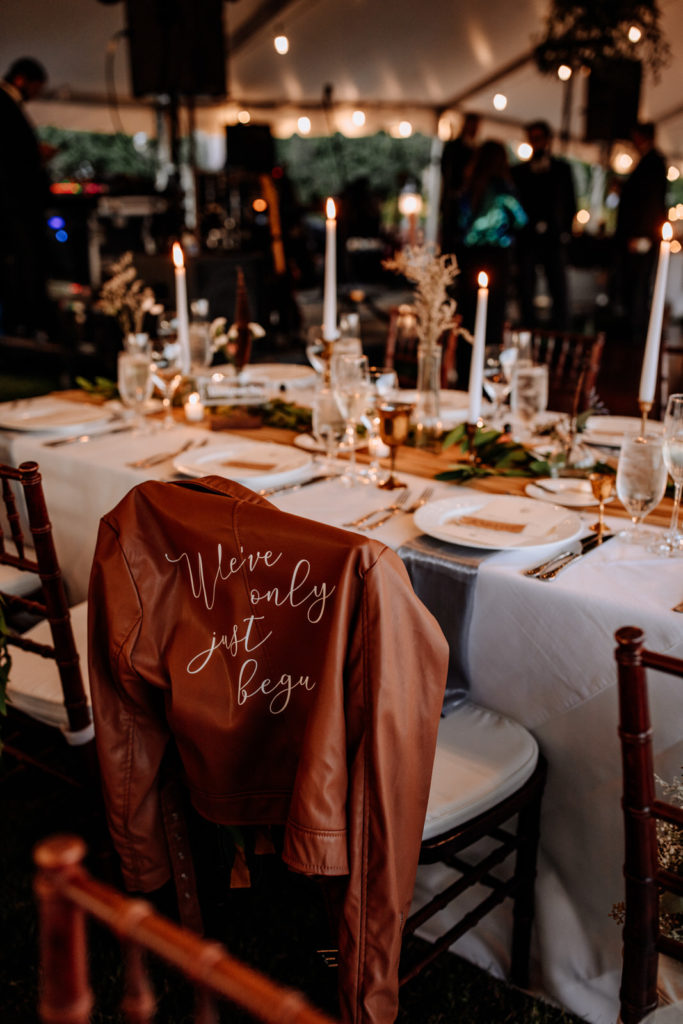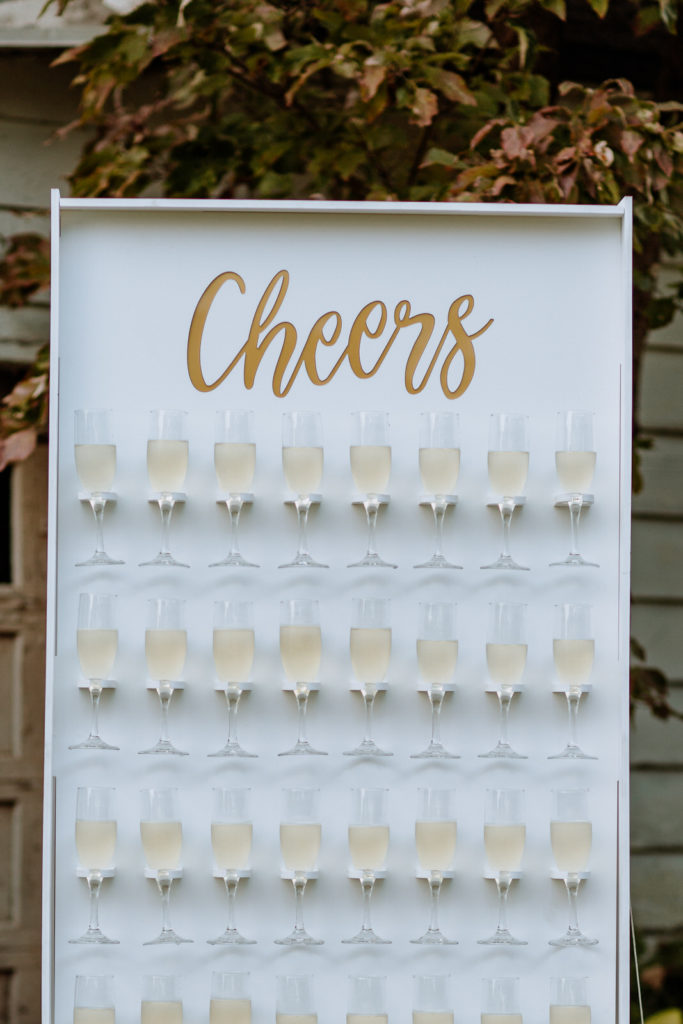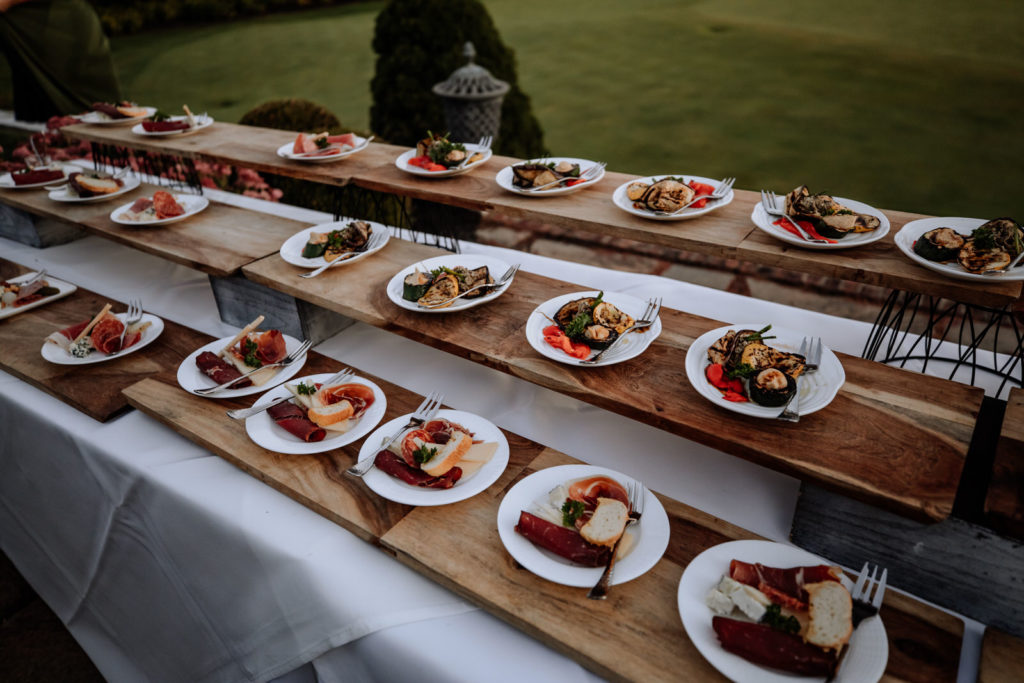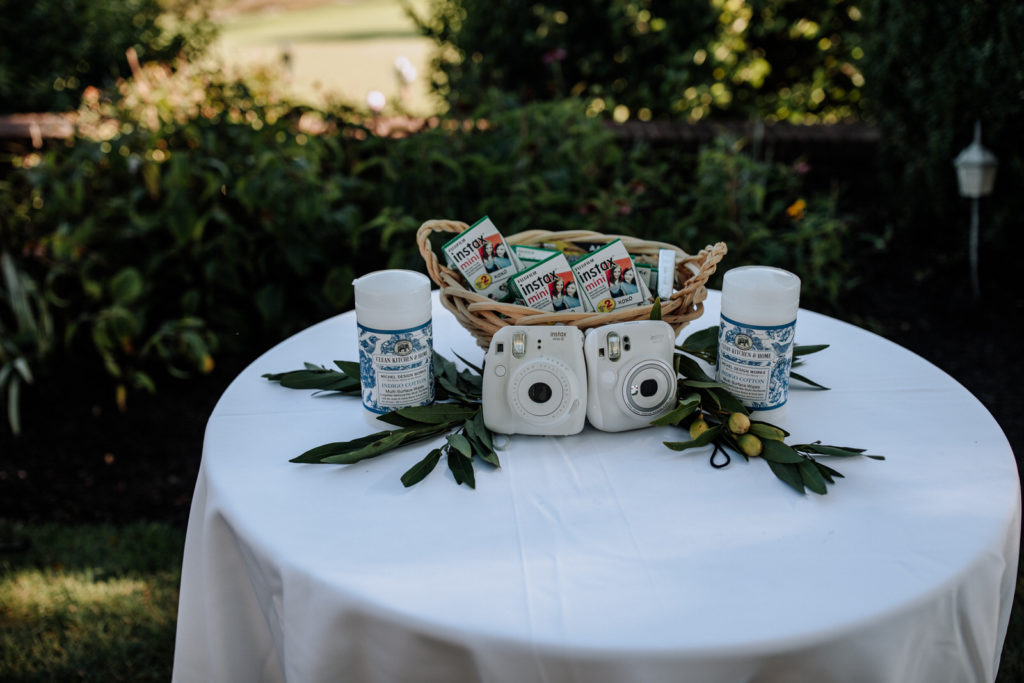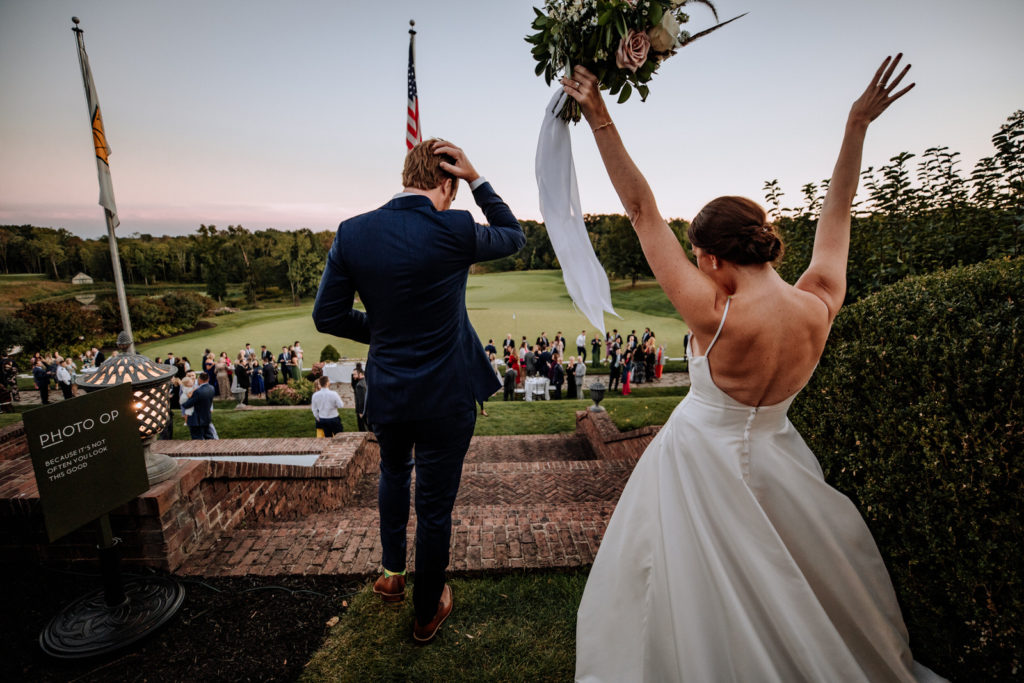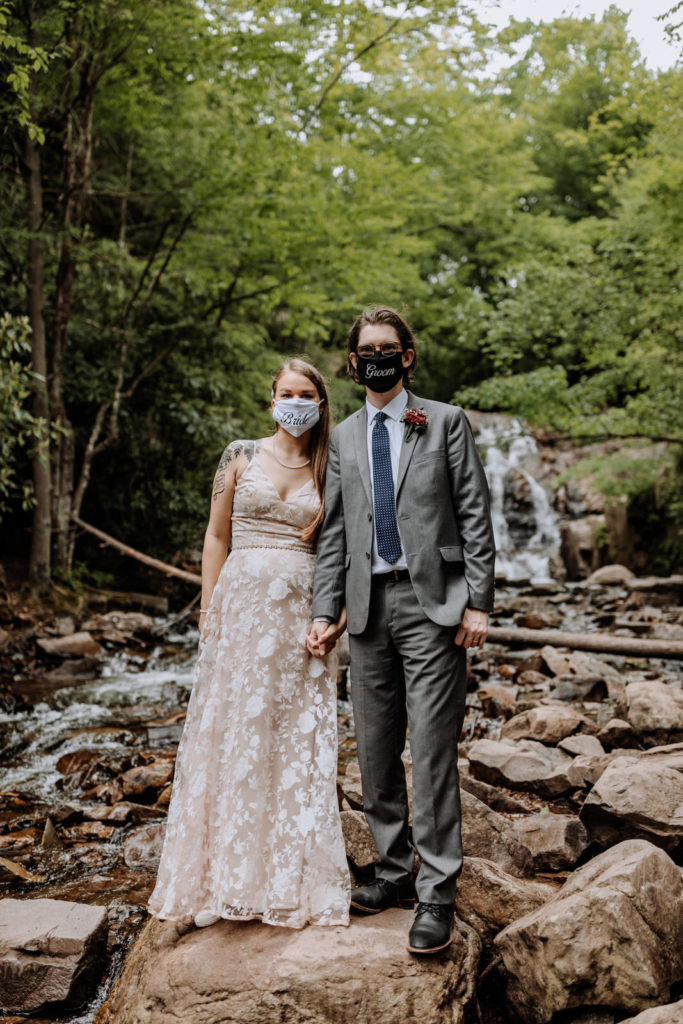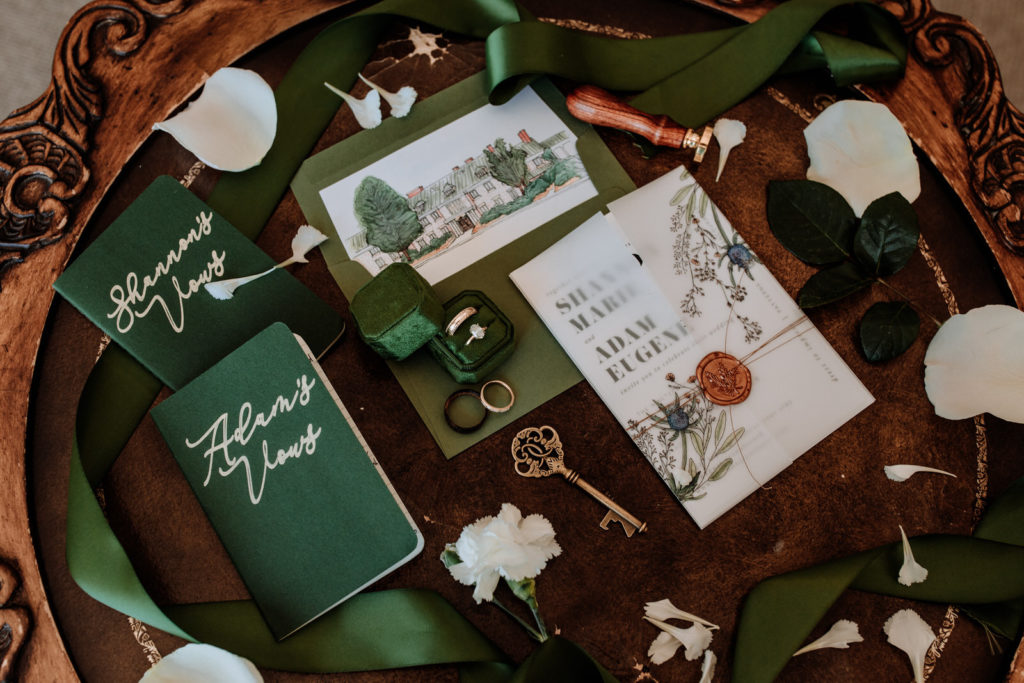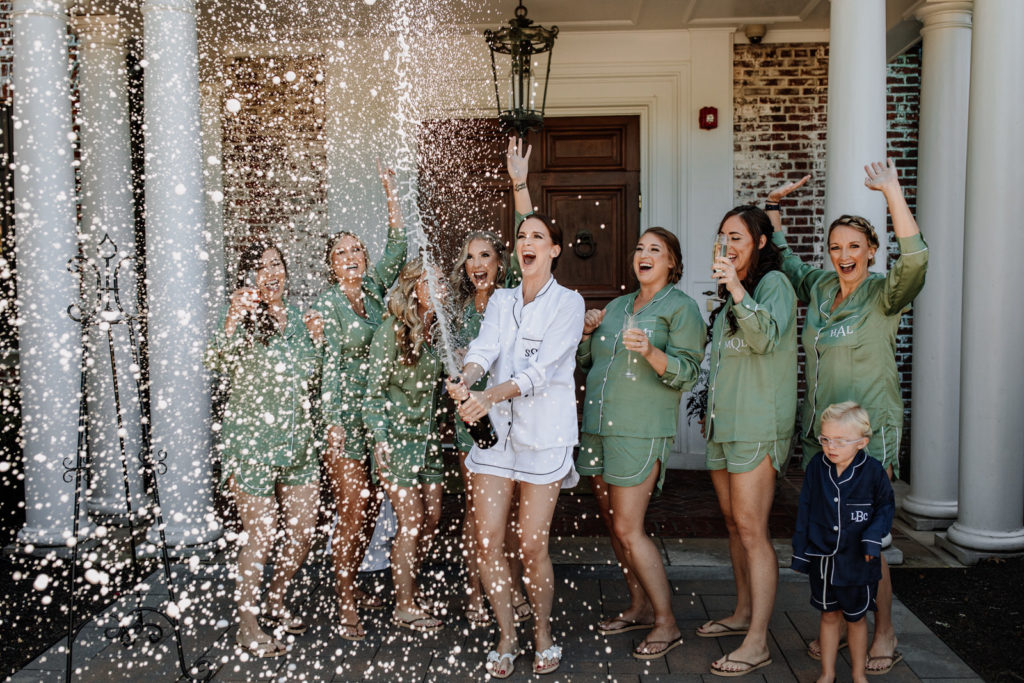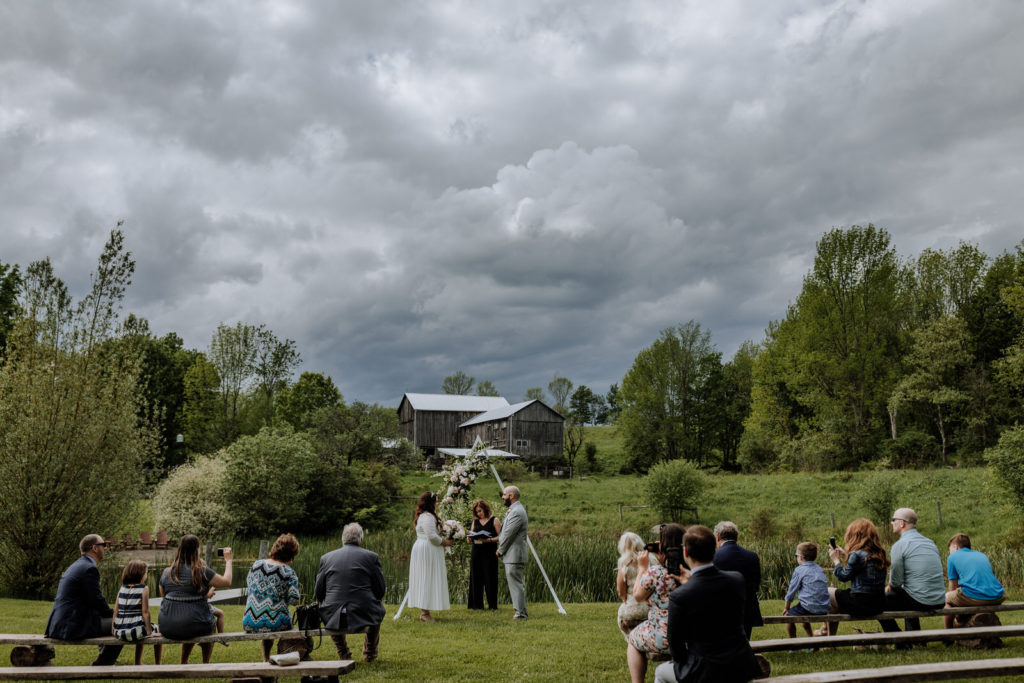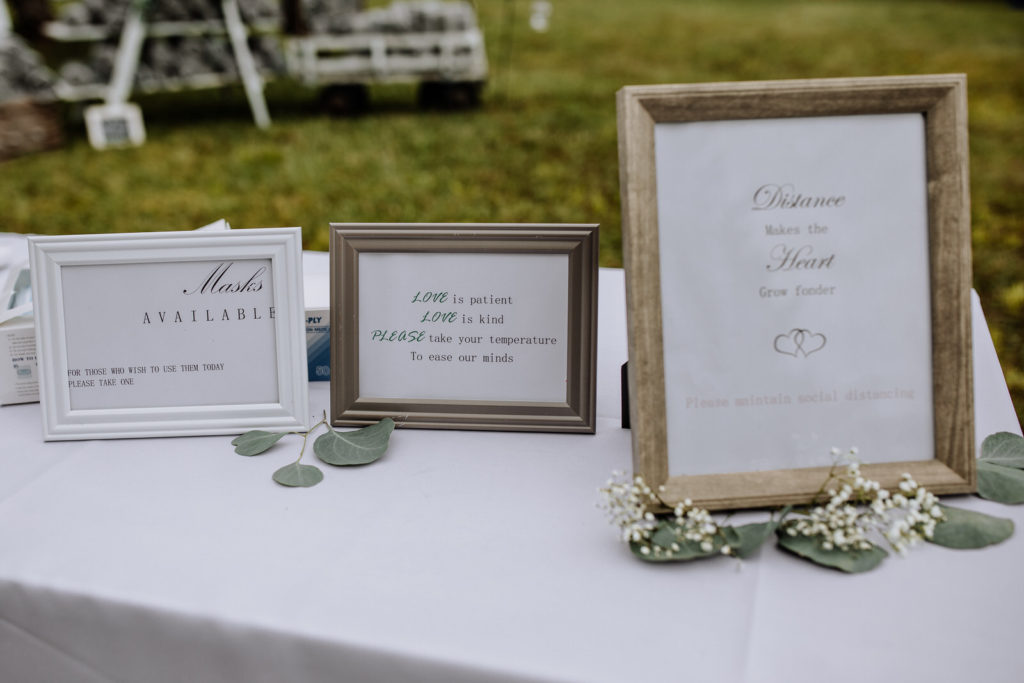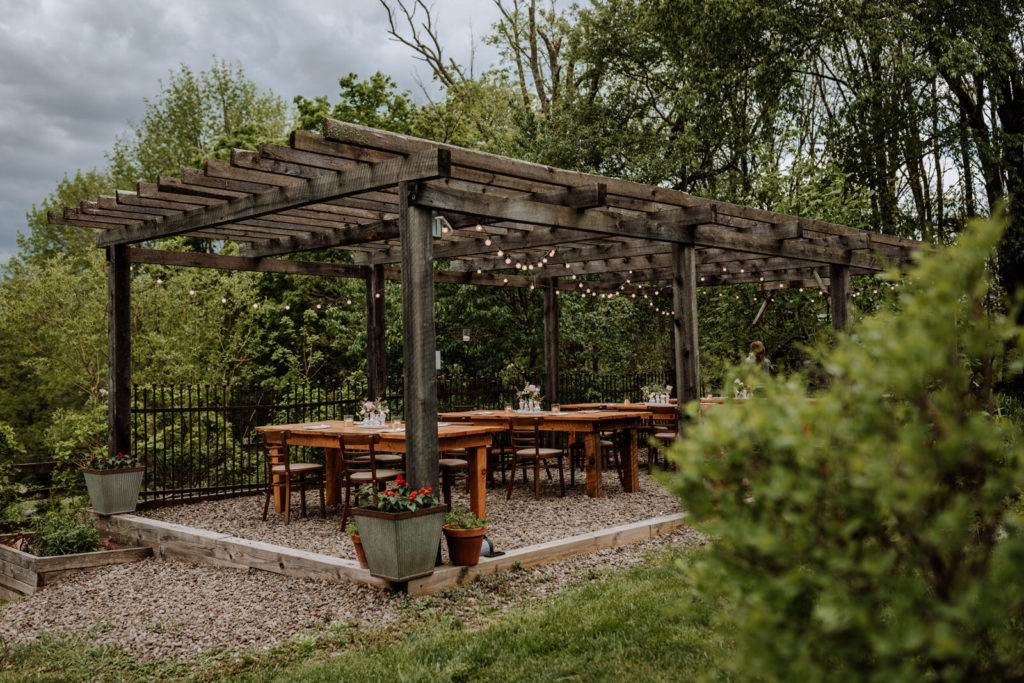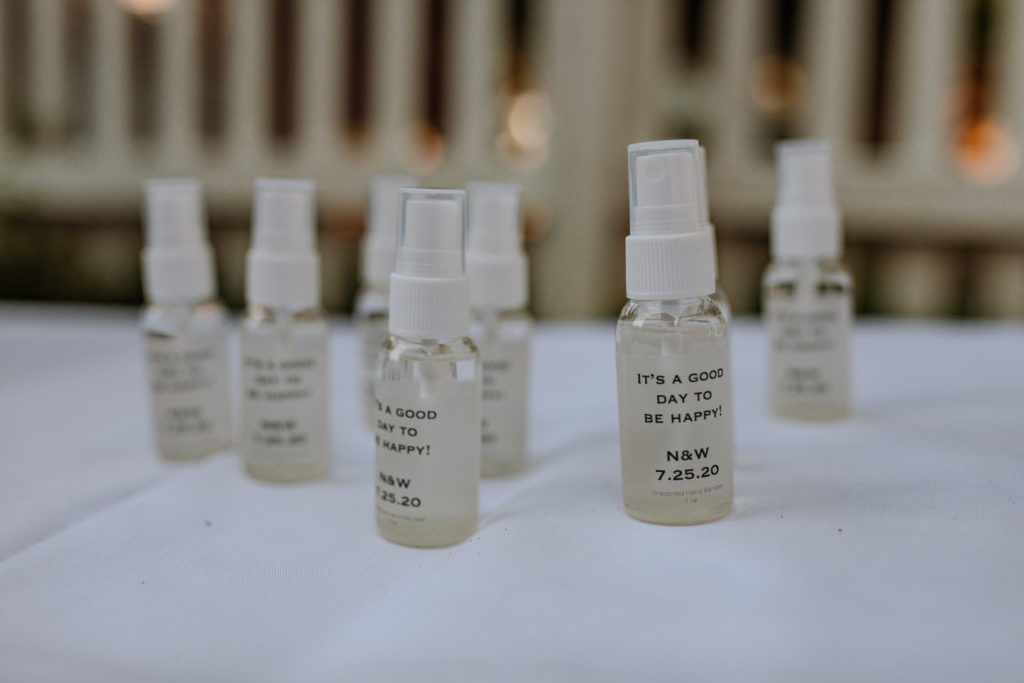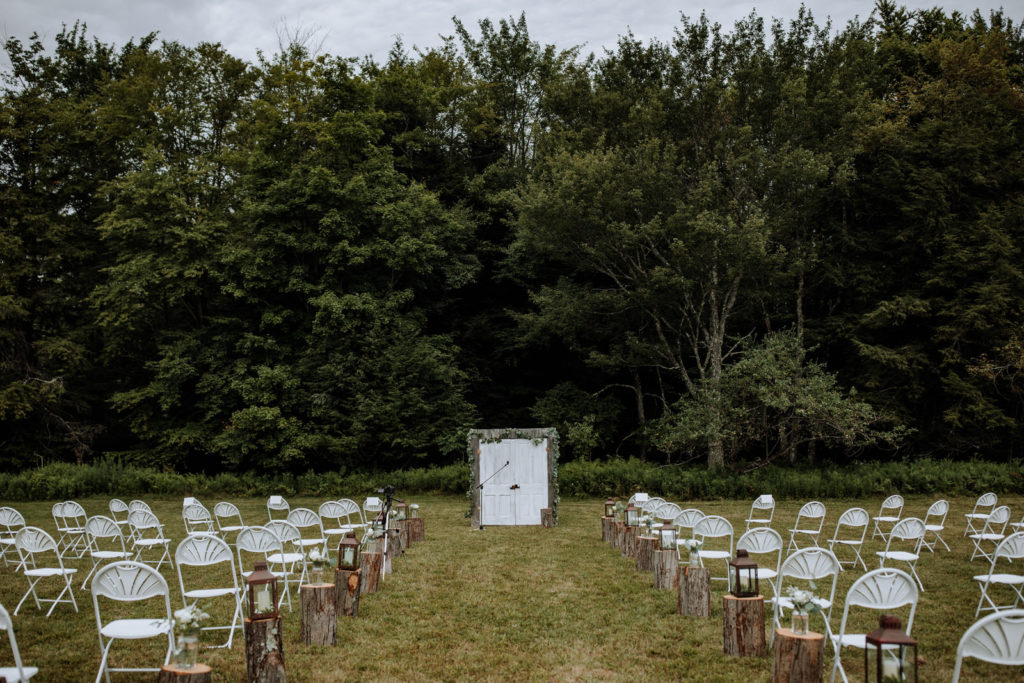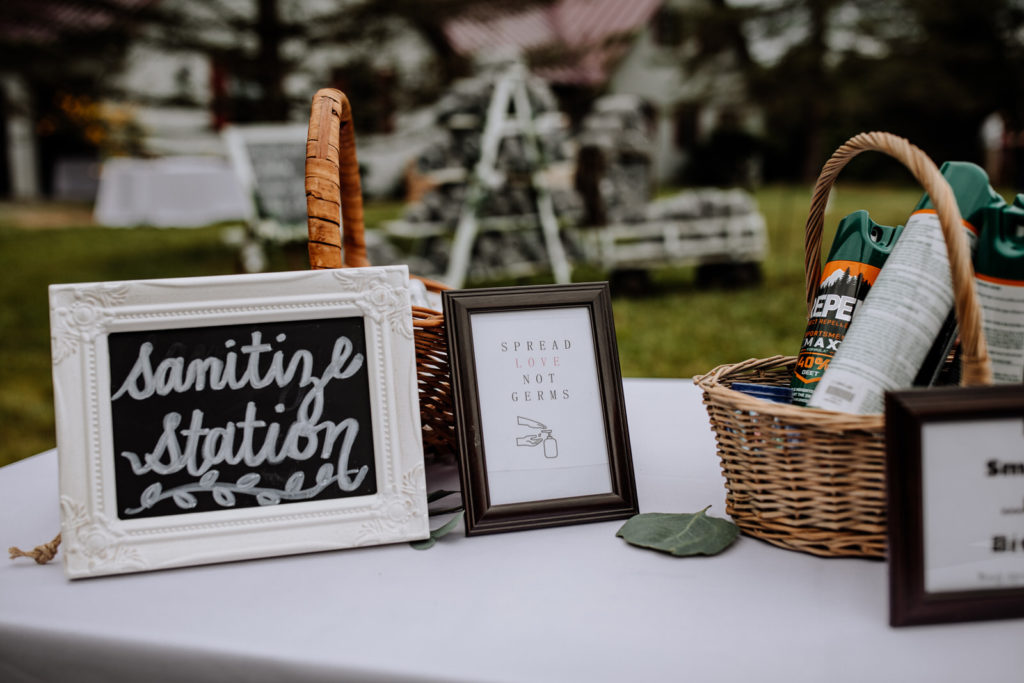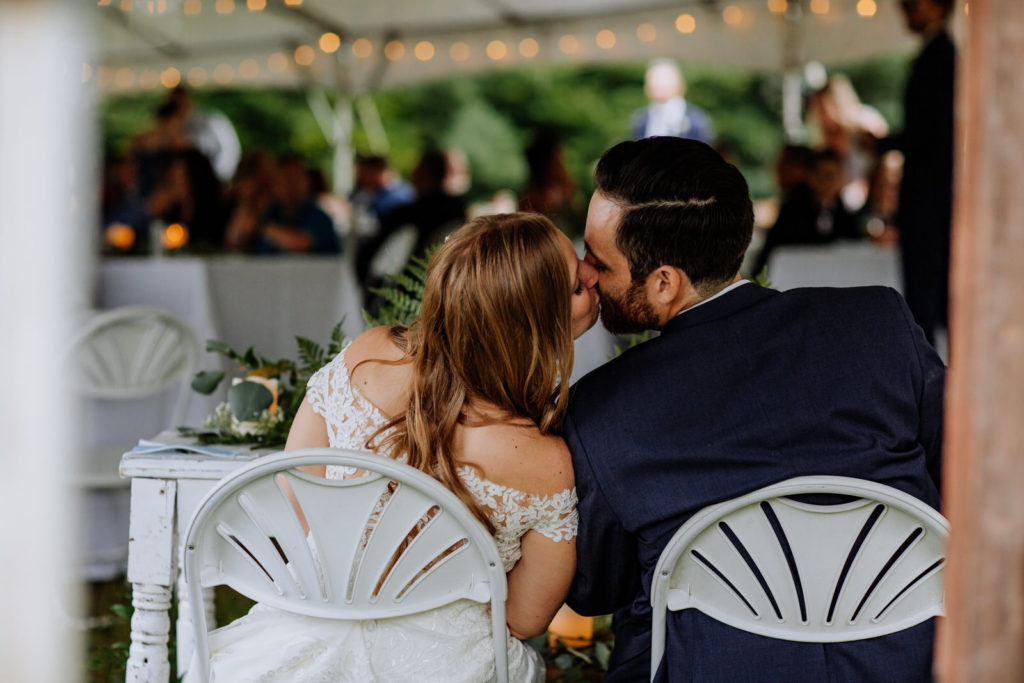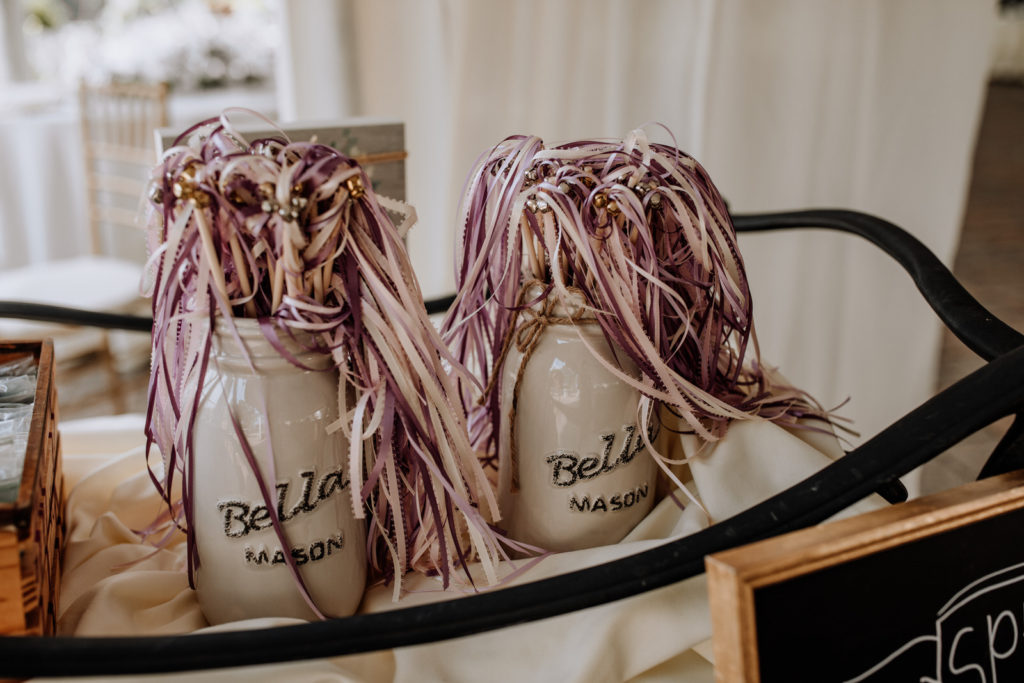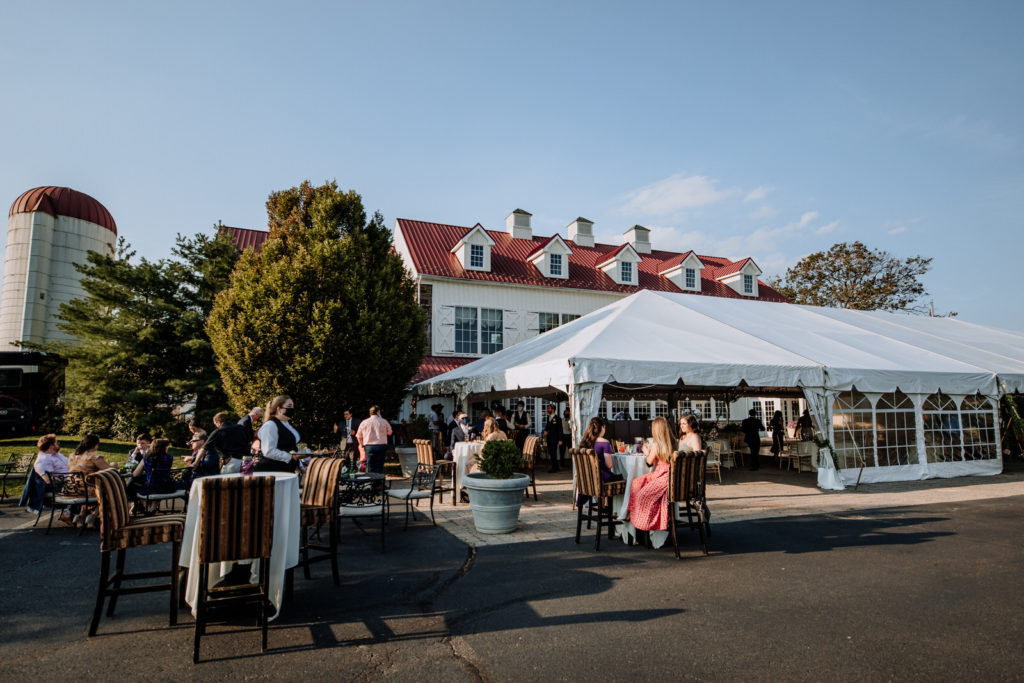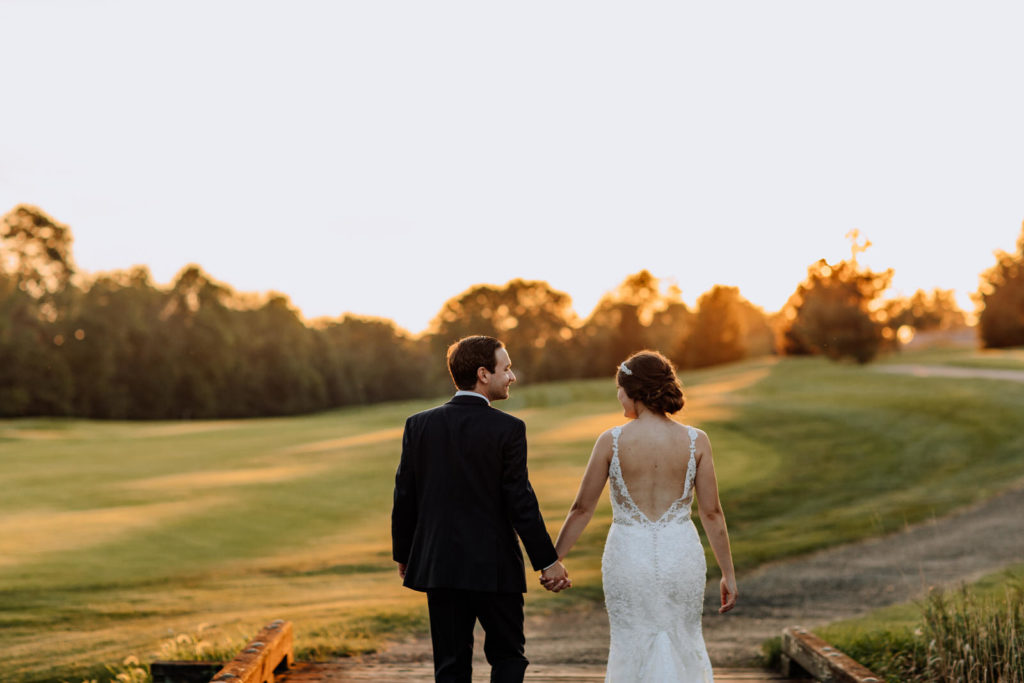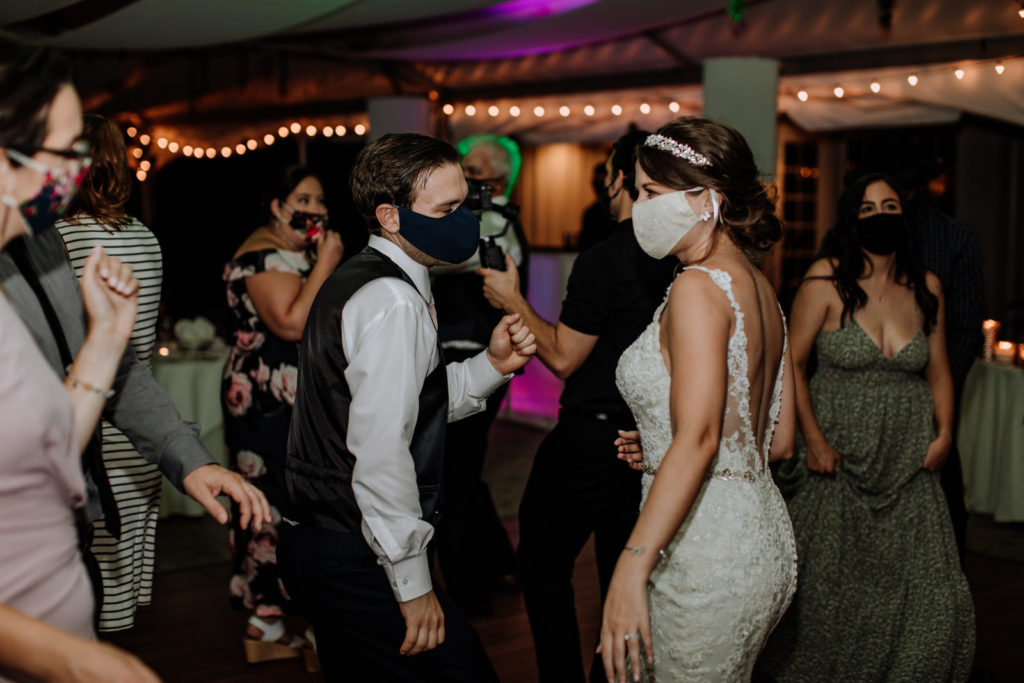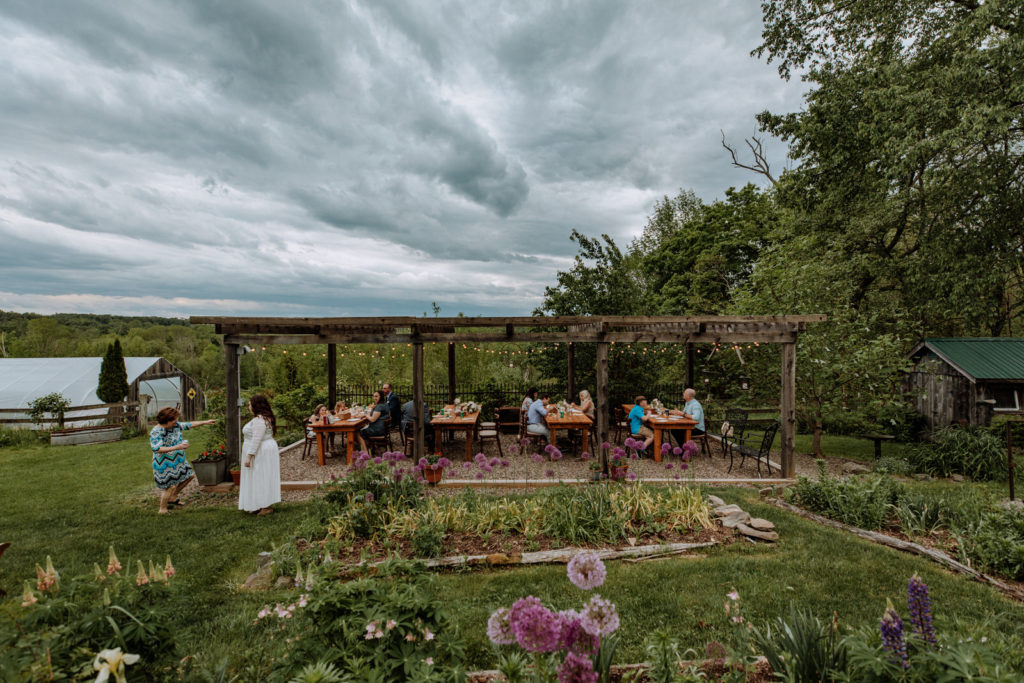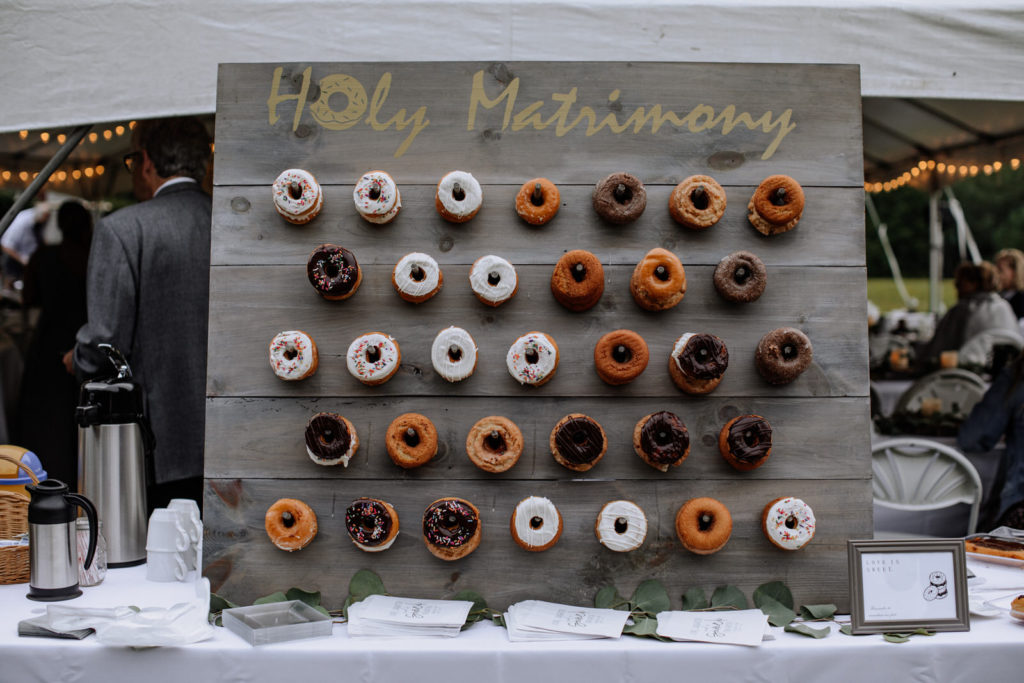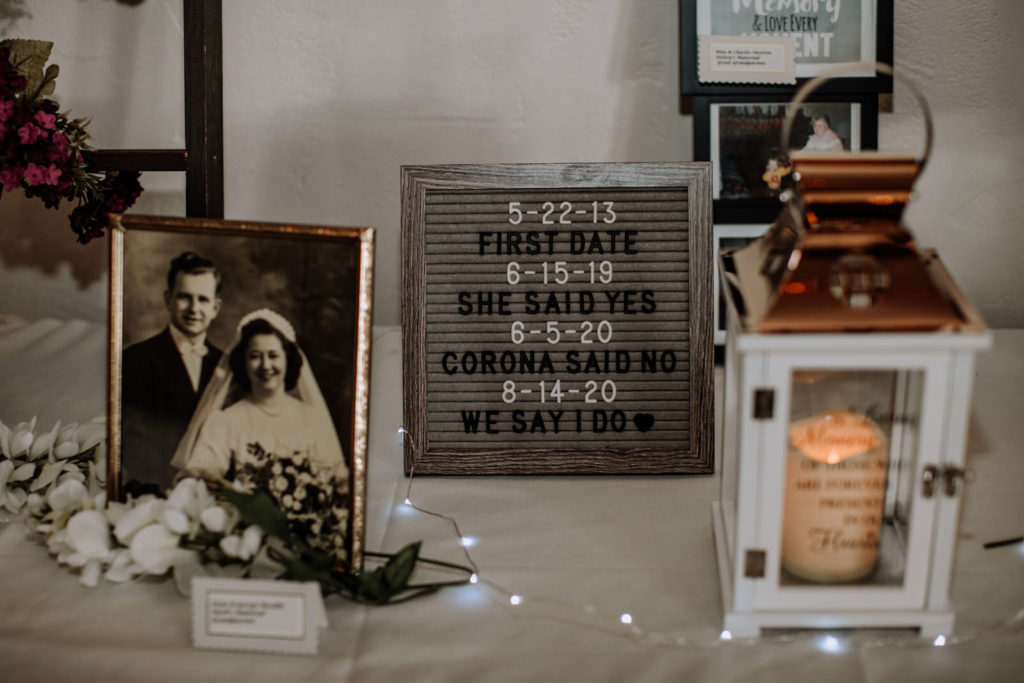Despite what you may have heard, weddings have not changed too much during the coronavirus pandemic. In reality, weddings have been expanding to take on different forms. Elopements and intimate micro-weddings are becoming increasingly prevalent, though traditional weddings with larger guest counts are still continuing to take place.
As wedding photographers, we’ve continued to document weddings (in all of their forms) during the 2020-2021 coronavirus pandemic. This gives us a unique perspective to talk about this topic as we are observing many weddings this season.
How weddings are unfolding is different than how it is largely portrayed by media coverage. We want to share some insight into what weddings really look like while being impacted by COVID-19 regulations.
We hope this guide helps you if you are a couple trying to figure out how to plan a wedding during the coronavirus pandemic as we will be providing an honest, unbiased look at weddings. This will include talking about current coronavirus restrictions, how wedding venues & vendors are adapting, and what your day will look like.
Disclaimer: We are not medical professionals. The information presented here is based on our observations of weddings during the pandemic, but is no substitute for medical advice or your local regulations. We primarily photograph weddings in Pennsylvania, New Jersey, New York, Delaware, Maryland, and New England states. Every state has different regulations that may impact your wedding, but we do feel the key points we discuss in this post will apply to virtually all weddings regardless of your location.
Coronavirus Weddings: Expectations vs. Reality
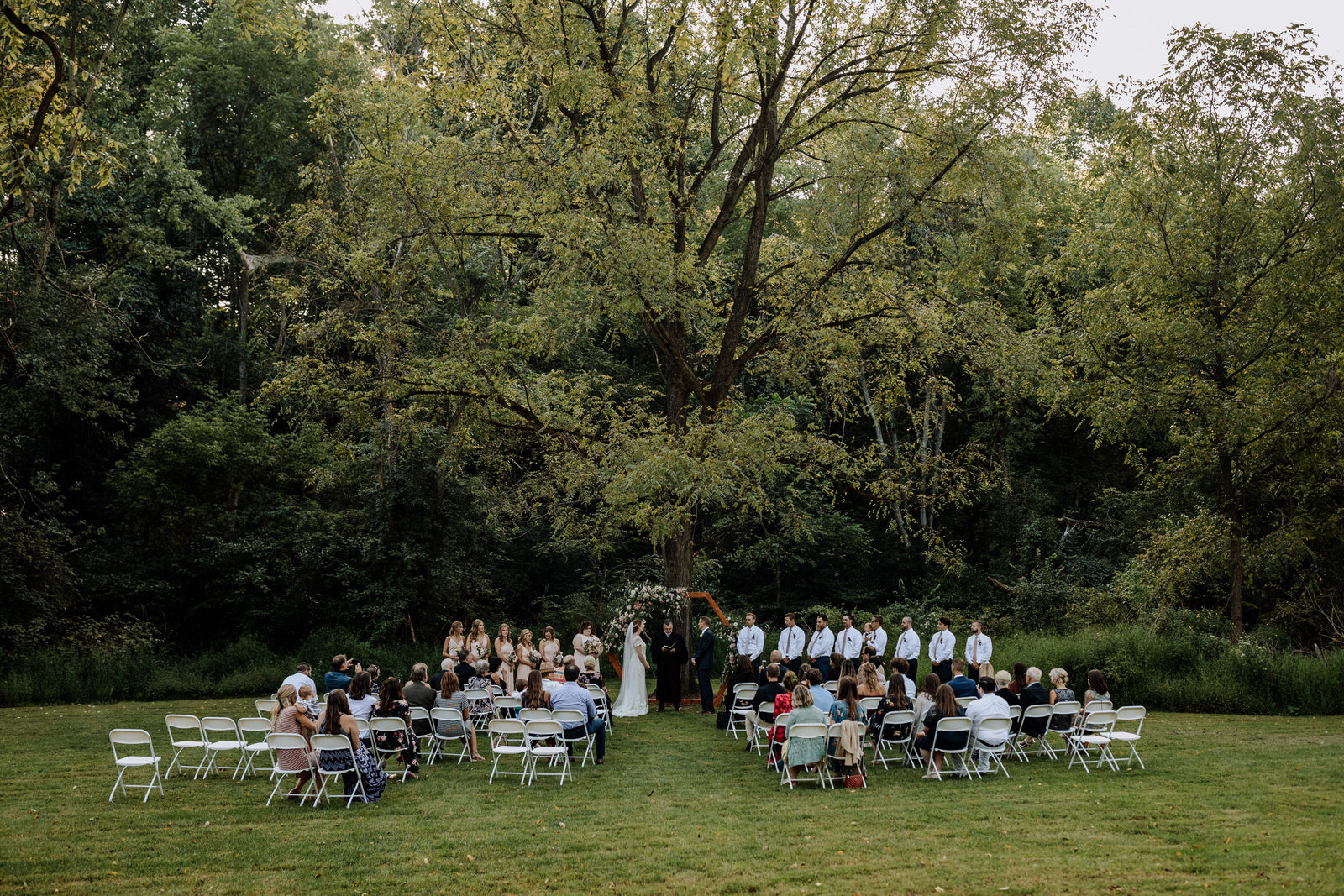
Wedding planning during a global pandemic is admittedly a little stressful and even scary for some couples.
After all the planning, what will the big day really look like?
And will you truly be able to enjoy yourself without fear of spreading the virus to your loved ones?
Back in March 2020, as the United States started to go into “shock” due to business shutdowns, personal movement restrictions, and social distancing measures beginning to fall into place throughout much of the country – weddings and other gatherings came to a total standstill.
In Pennsylvania, we could not legally operate as photographers, even for engagement photo sessions in the remote woods, much less document wedding days. This was confirmed after speaking directly with our State Representative and the PA governors office on multiple occasions.
Couples, their families & friends, and wedding vendors alike were all directly impacted in significant ways.
Over the past several months, the world has drastically changed as people have adapted to the “new normal“.
Things that were once very scary, like masks, are now so commonplace that they don’t distract from the day. Admittedly, we had feared they would – but the more weddings we go to, the more we realize they are not as much of a big deal to people as we had expected.
It turns out, the reality of hosting a wedding during the coronavirus pandemic is not as frightening as it once was. In some strange way, it may even hold a little charm. At least, it’ll be a fun story to tell the kids some years from now about that ‘rona wedding!
Early Pandemic vs. Today: A Big Difference
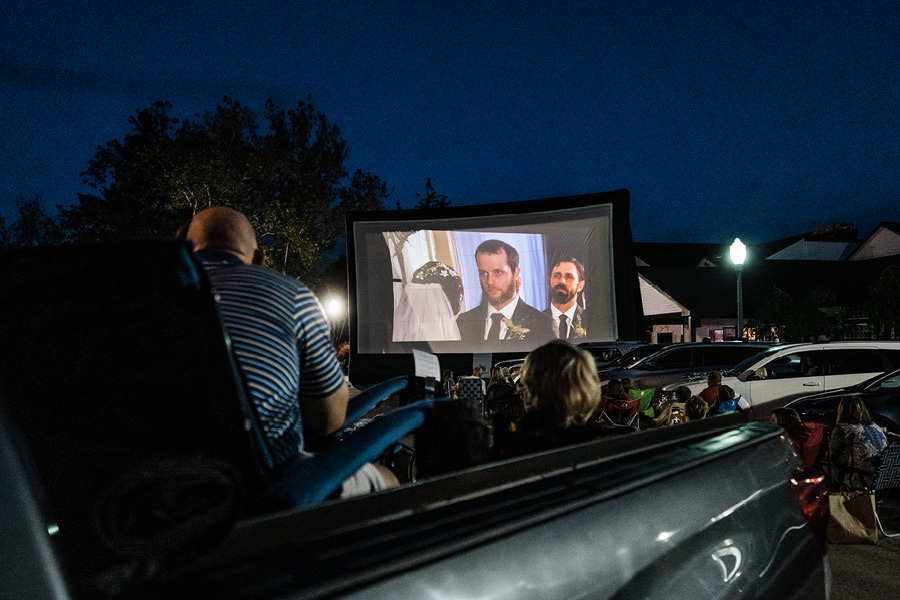
At the start of the pandemic, 2020 went from being a significant year for the wedding industry to weddings becoming virtually non-existent for a while.
Some couples found unique solutions (read: “loopholes”), such as the couple seen in the photo above (taken by our friend Marshall Scott Photography), where extreme measures to allow for social distancing involved a drive in movie theater to get the job done. That wedding went on to be featured in major publications like Insider Magazine because it represents so significantly (and extremely) what a wedding in a locked down world can look like.
Today, in most areas of the country, weddings are able to be held comfortably.
Yes, there are some things people need to adapt to, most commonly smaller guest counts and social distancing measures. But, if our experience at weddings in more recent months shows anything – it’s that couples and their family/friends are excited to be around each other in a time where many have been very distant for quite some time.
Social Distancing & Masks: What do these look like at weddings?
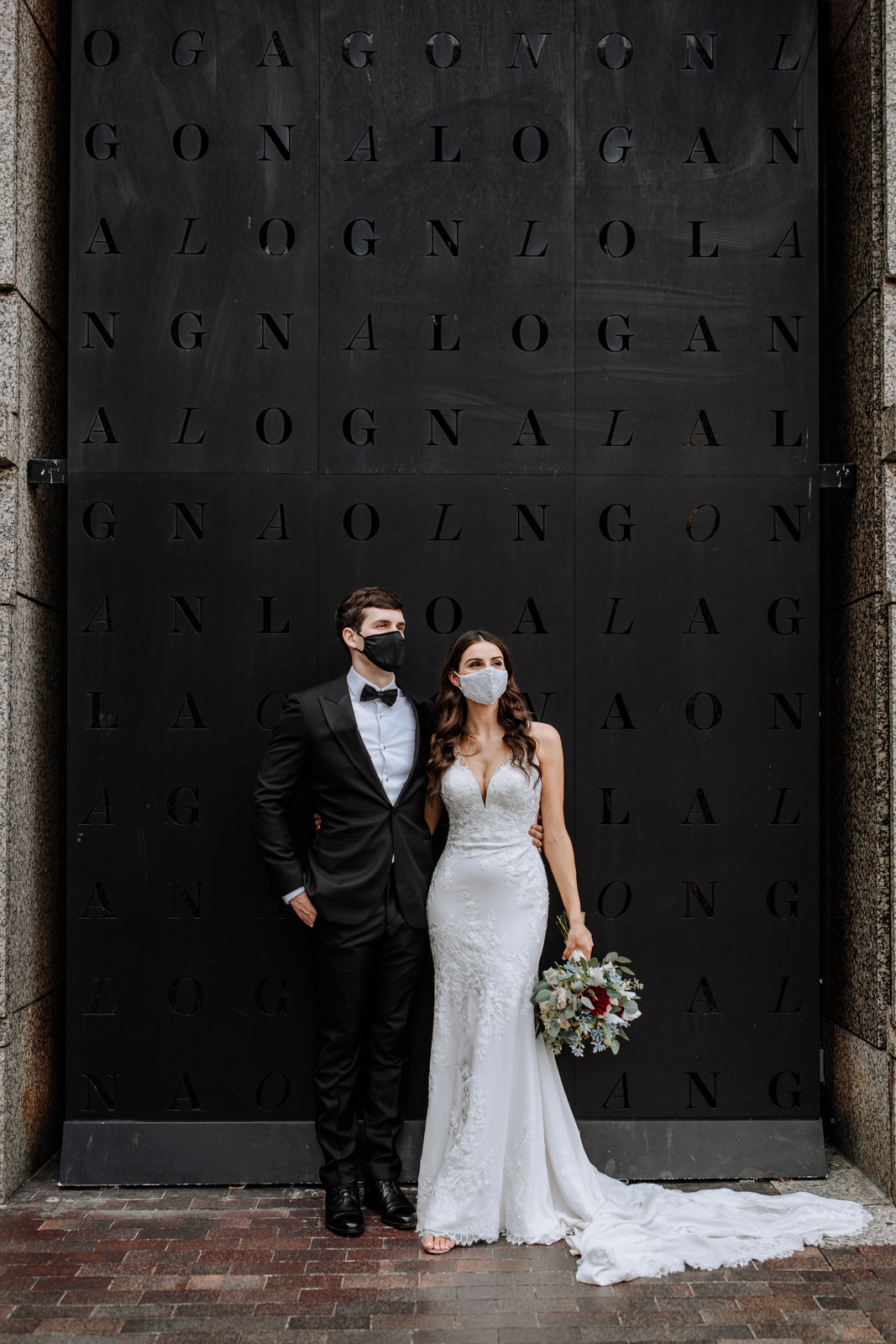
To combat the coronavirus, the Center for Disease Control (CDC) has issued a number of recommendations including social distancing (maintaining 6+ feet between families) and wearing masks (to protect from the spread of the virus). Due to these recommendations, state and local governments have issued mandates for people and businesses to follow these guidelines in many parts of the country.
On the surface, the idea of wearing masks and needing to keep some level of distance at weddings seems to take away from the desire for people to be more connected during these gatherings.
Let’s be real: wedding days are often one of the few occasions where some family members are able to see each other, and reuniting for many families in this way is hugely significant. It cannot be underplayed. Even as a “non-essential” gathering, losing out on this opportunity to socialize with our loved ones is a real and tangible loss.
On another level, distancing and masks run the risk of impacting the “look” of the day.
Many brides we’ve spoken too over the past 8 months have told us one fear they have is looking back at pictures of their wedding and only being reminded of the coronavirus.
One bride of ours in particular worked in the healthcare industry as things were beginning to unfold, and had seen the horror of the illness first-hand.
As we’ve continued to document weddings during the pandemic, we’ve identified ways that help to minimize the imprint of “the virus” and maintain focus on our couples, their families & friends, and the beauty of the day. Yes, masks are not entirely unavoidable in photos (how could they be?) – but the affection and love shared during these days resonate much stronger. We share some pandemic wedding galleries later in this post you should definitely check out to see what these days are looking like when professional photographers capture your day!
Our honest experience with COVID weddings, social distancing, and masks: most weddings begin the day with more cautious measures being taken. Wedding vendors are (largely) seen wearing masks throughout the entire day. We personally wear masks all day – for ourselves, and for our couples & their guests. A raw observation, as the days unfold, things tend to become more lax – for better and for worse. Unless a wedding venue is strictly enforcing rules, people will do as they please.
5 Coronavirus Wedding Trends
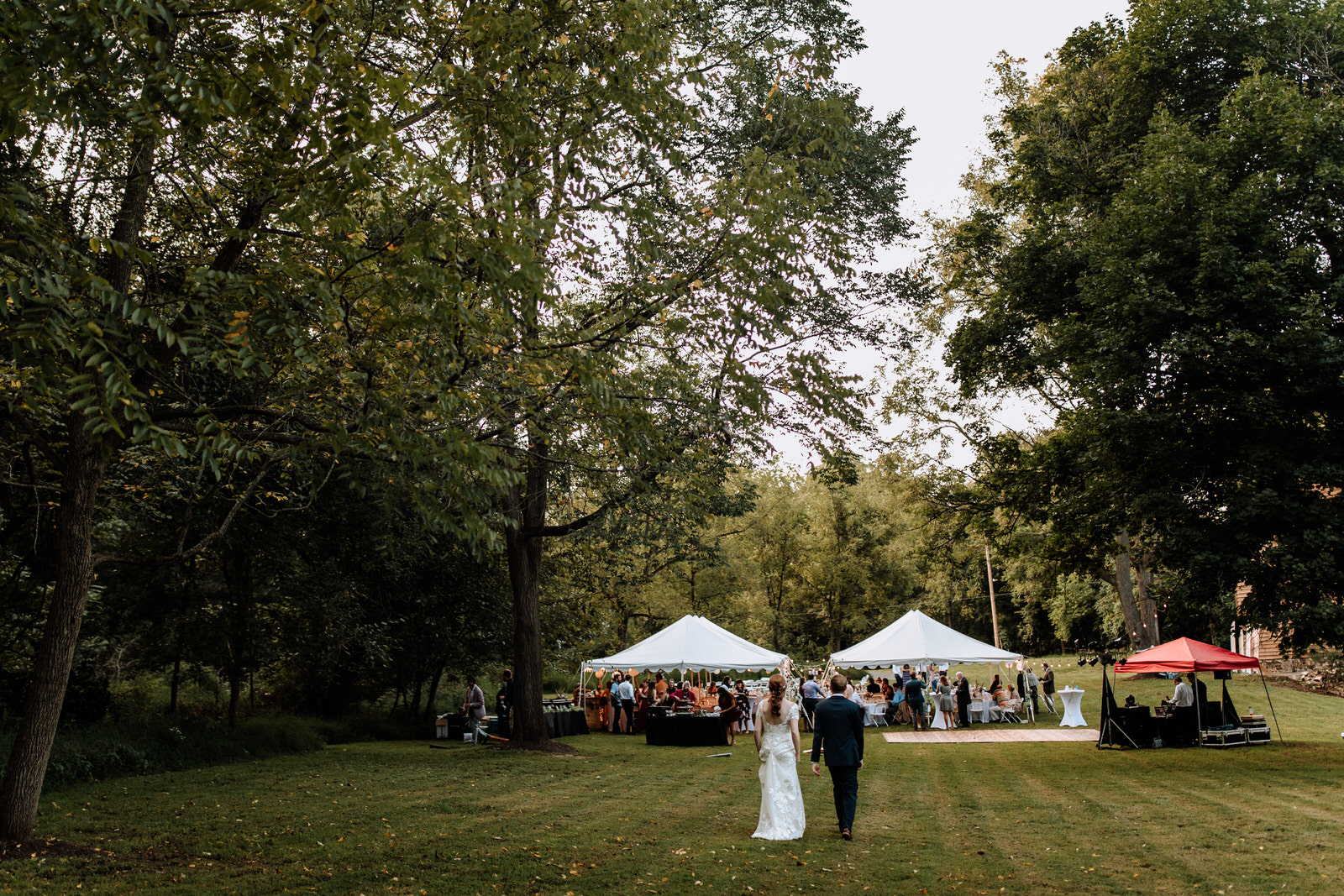
In 2020, wedding industry trends have been significantly overhauled thanks to the coronavirus. Wedding venues & vendors have had to adapt to provide a wedding experience that is simultaneously beautiful and safe.
In most years, wedding trends evolve based largely on aesthetics. A few years ago, there was a boom in more rural barn weddings in our area – this influenced everything from decor to even the general “vibe” being more relaxed and casual vs. the traditional dressed up ballroom weddings that were once the only big option available.
During the COVID-19 pandemic, wedding trends have mostly shifted to account for more practical things that support a safer gathering environment. The aesthetic changes have been secondary.
1). Wedding livestreams
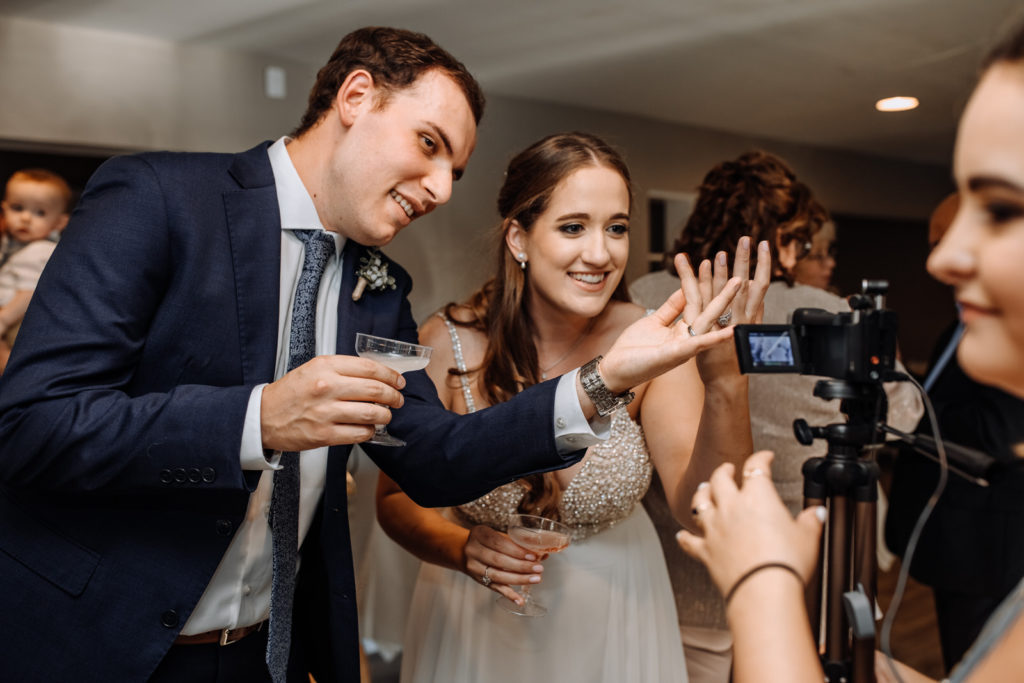
Due to forced separation of family members and friends who may live far apart from one another and unable to travel during these times, one major change that has come to the wedding industry is a large increase in weddings being livestreamed for these guests to still be able to see it unfold. Skype, Zoom, Facetime – these are all the big platforms for todays weddings thanks to this.
For higher quality streaming solutions, many wedding videography companies have services that can provide better quality offerings. One such company is LoveStream.
2). Smaller guest counts
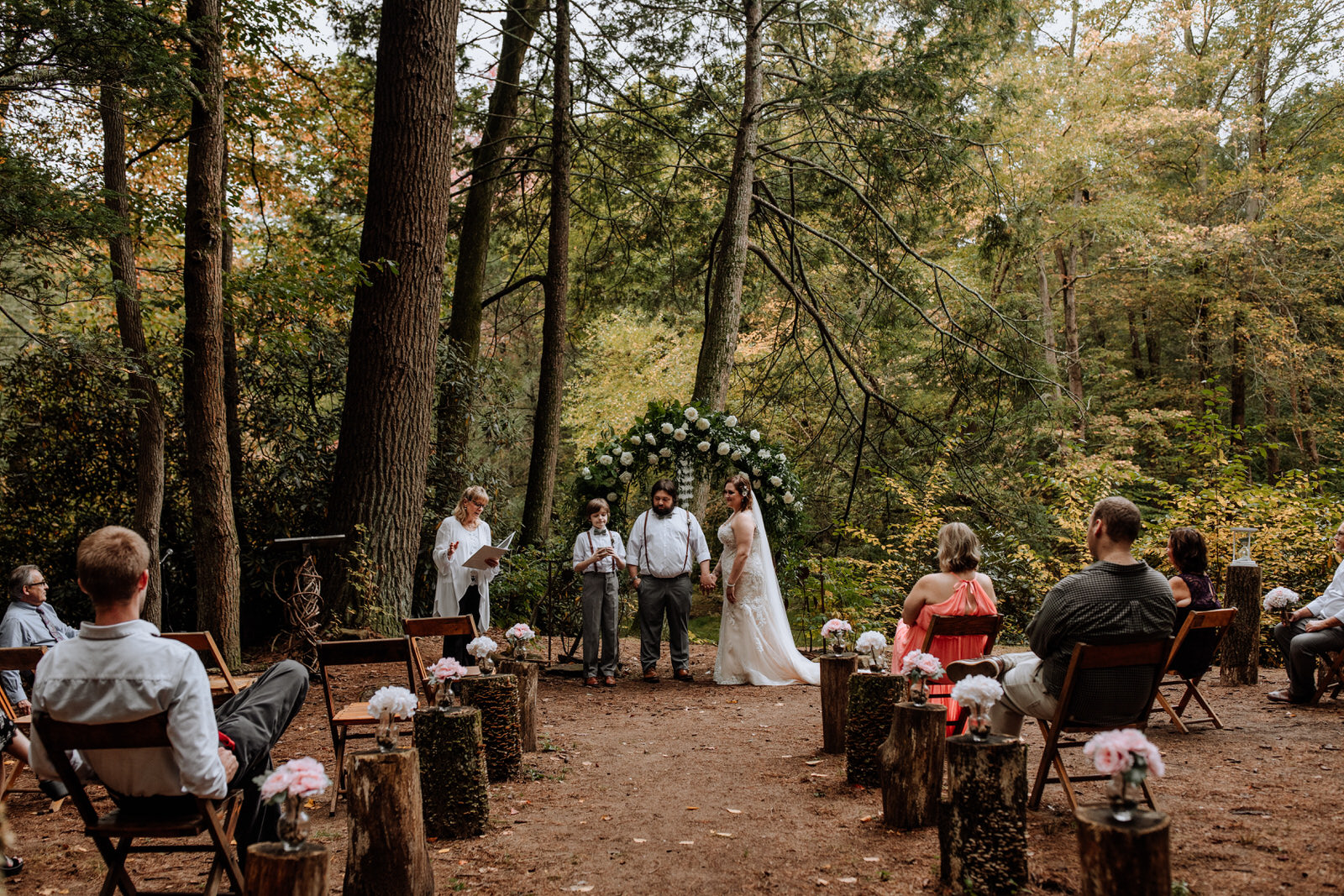
At the start of the pandemic, wedding guest counts dropped dramatically as many states banned gatherings altogether or imposed highly restricted numbers of guests. In Pennsylvania, guest counts were once capped to 25 people. They have since been amended to allow for guest counts up to a certain percentage of an event spaces maximum capacity.
Beyond just government mandates, though, it’s become less practical for family and friends to travel as far as they may have in pre-COVID times, so guest lists are trimmed as a result.
While downsizing a wedding guest list is not “fun”, it does lend to a more intimate wedding day – something we’ve heard over and over again from our couples that they actually ended up liking more!
Note: it should be said, while guest counts may be trimmed, how many guests you can have at your wedding will ultimately be dictated by the government and your venue. Over time as restrictions begin to ease, larger guest counts will become increasingly common again.
3). Sanitation stations
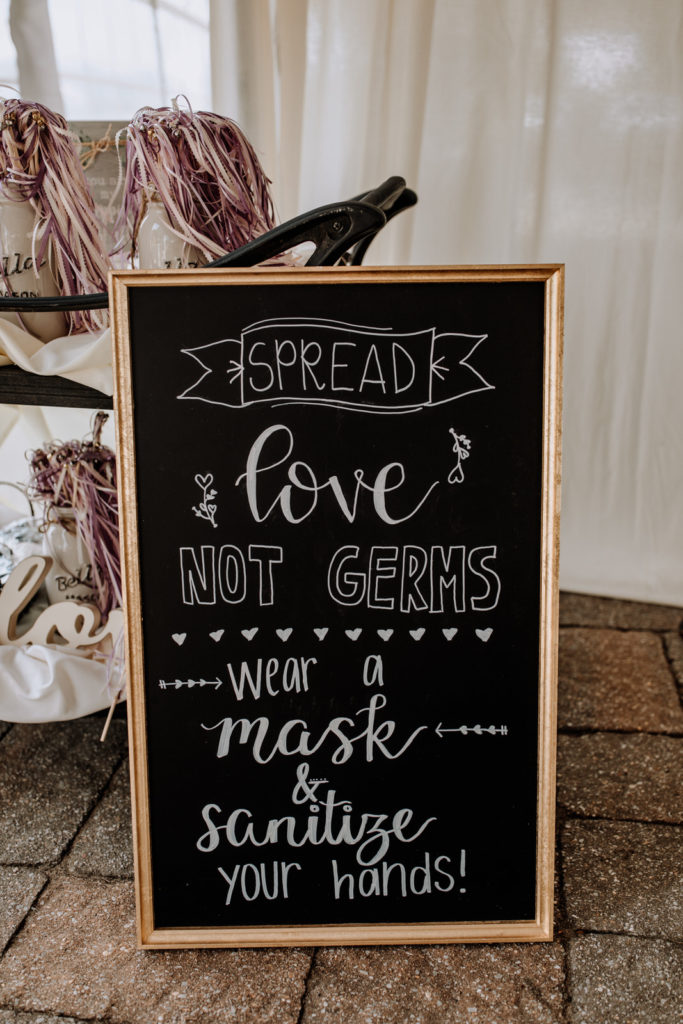
“Spread love, not germs”
This has become one of the catch phrases of coronavirus weddings.
Sanitization stations have been put in place to encourage guests to wash with hand sanitizer regularly, as well as provide a space to offer up extra masks if needed.
These stations can be spruced up to blend in with other wedding decor through the purchase of signage like this (Amazon link).
4). Wedding masks
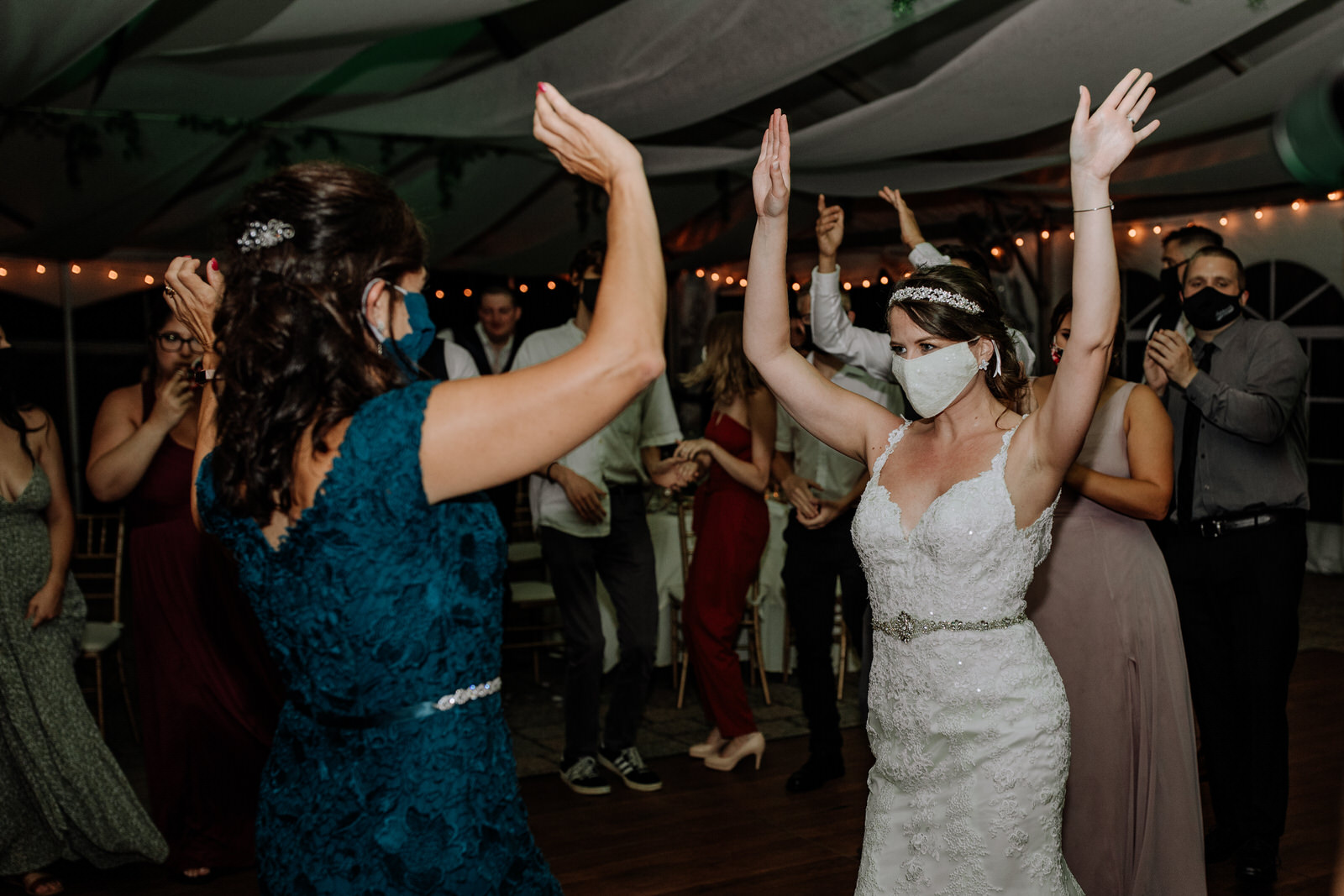
Since the aesthetic of weddings matter to many couples who are getting married, it’s no surprise that an influx of special masks like these (Amazon link) have been created to make them feel more like a part of the day, instead of like people are stuck in a sterile medical environment.
There are a ton of mask options out there.
Many bride & grooms are finding masks that match their attire. We’ve even had brides who had their seamstress make a mask from their extra wedding dress fabric! Bridal parties sometimes have special masks (even just color coordinating with their own clothing). And we’ve also seen simple white masks handed out to all attending guests, so everyone can have a cohesive look together.
In our experience, masks feel less threatening in a wedding environment when they contribute to the day’s look and feel in a positive way. In a sense, they become a stylistic decision that happens to have health benefits, instead of being a health decision that distracts from the day in a negative way.
5). More outdoor events
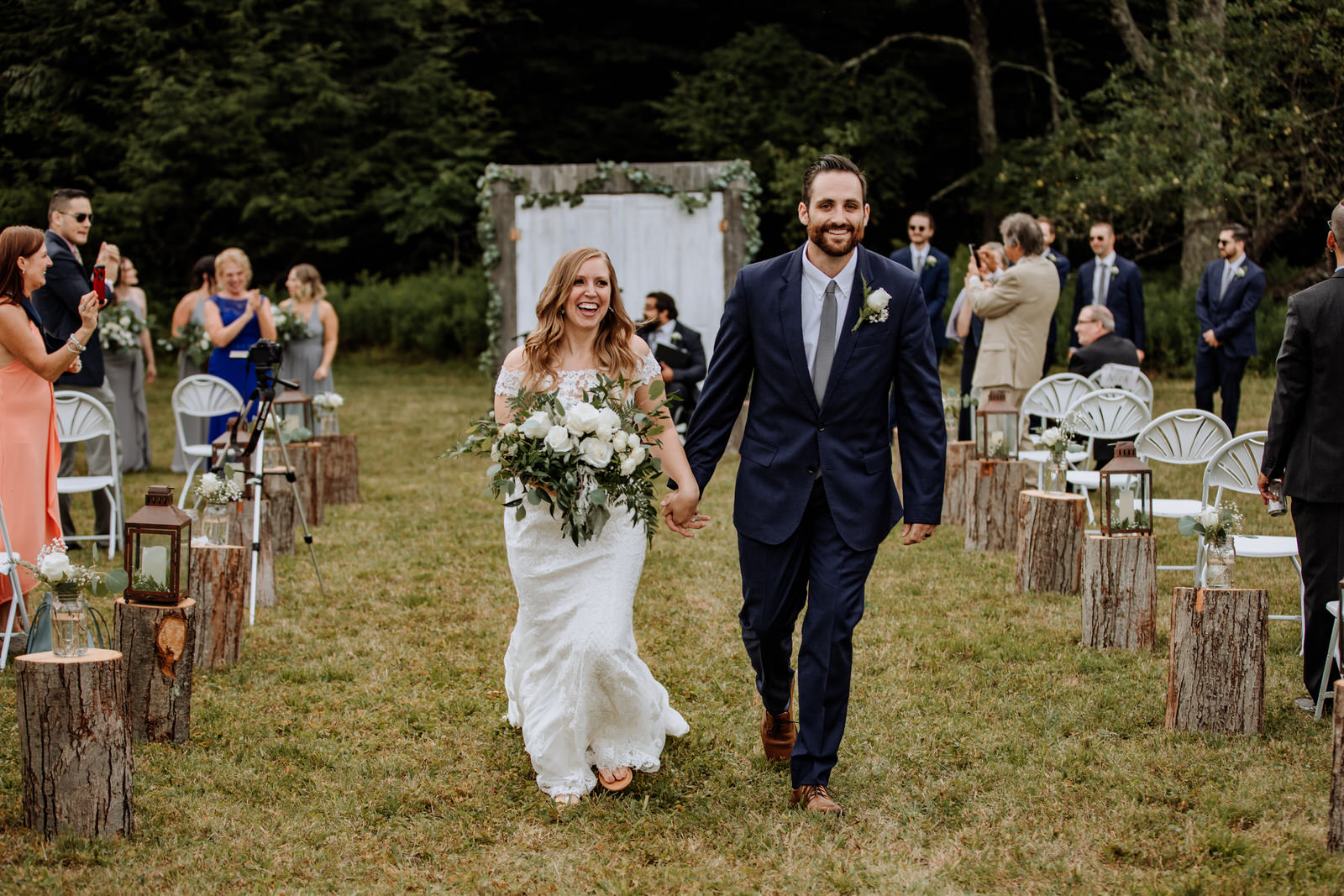
The most significant shift in the wedding industry has been couples moving their weddings from more traditional indoor venues to outdoor options. Some wedding venues were able to adapt to this change in demand (like those with good sized properties with scenic views outside).
In practice, many weddings turned away from traditional venues altogether in exchange for at home backyard wedding options. Throw up some string lights and a tent, and people are ready to rock outside.
How Have Wedding Venues Adapted to Coronavirus Regulations?
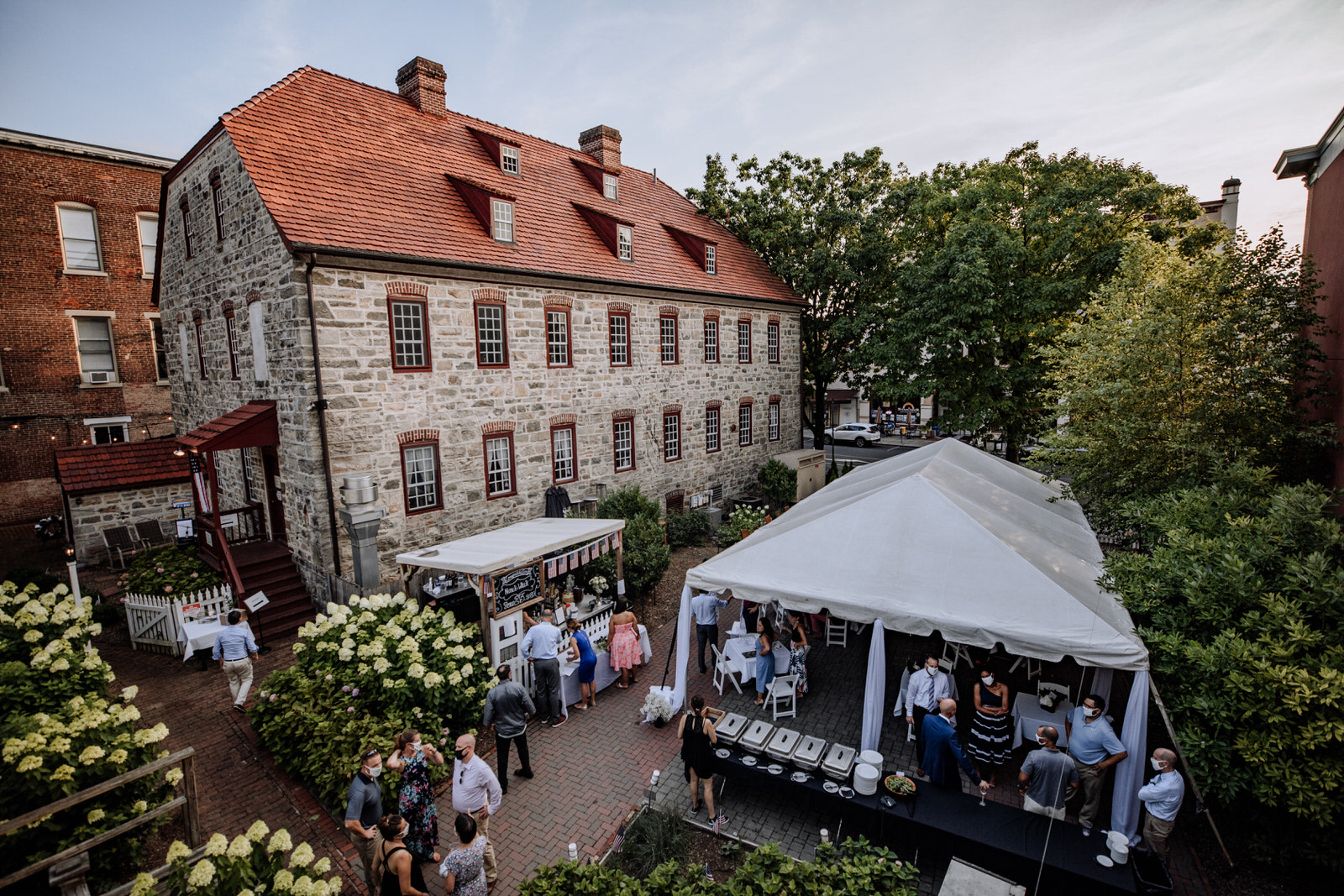
In light of rapidly changing regulations, wedding venues have been forced to adapt their businesses and gathering practices significantly. The changes we’ve observed at a number of wedding venues in our region have been overwhelmingly positive considering the challenges of putting on weddings that are safe in today’s climate.
Many venues offer a coronavirus response page on their websites, where they highlight the things they are doing to keep people safe. The common trends we’ve seen include:
- Setting the expectation for social distancing & masks. This includes announcements and posted signage.
- Transitioning weddings from indoor spaces to outdoor spaces. In some cases, this means shifting a wedding to be under a tent, in another “open air” building on a property (like a greenhouse), or only minimally using an indoor space.
- Dedicating venue staff to take guests temperatures and additional cleaning. Upon arrival to some venues, staff take temperatures to verify no one is actively sick. We also see staff sanitizing locations more frequently.
- Regularly changing policies in light of new government regulations. Most importantly, as the government issues new or updated mandates, venues will need to frequently adapt to these changes. Going into 2021, we expect more frequent shifts by the government towards normalcy at wedding events.
In all the good things we have to say about some wedding venues, we have also heard our share of horror stories from a few of our clients, as well as in stories on social media and in the news. This is largely shaped by deposit policies and being unwilling to move couples, forced by the pandemic and government shutdowns, to new dates so they can have their weddings as planned.
We can admit – this is not an easy road to walk, as the difference between a payment and a refund could mean insolvency for some wedding venues (and other vendors).
According to Fortune, an estimated 100,000 small businesses have permanently closed since the start of the pandemic – and it’s expected more will continue to close in the coming months. We hope for continued financial support by the government to assist venues and other wedding vendors (ourselves included) impacted by the current pandemic.
With that said, some things, like a lack of communication from a venue (even after you’ve tried reaching out) is flat-out unacceptable to us.
How Have Wedding Photographers Adapted to Document COVID-19 Weddings?
Wedding photographers are in an incredibly unique position as they really are active observers and documentarians of this major life event.
We cannot speak for every wedding photographer, but can give some insight into things we have been doing to help ensure a safe & beautiful day for our couples:
- Maintain greater distance. Our shooting style has adapted to leverage our longer lenses more, so we can still capture intimate moments without having to be as close in many settings.
- More critical of our perspectives during the day. Our style of photography blends fine art portraits with candid documentary photos throughout the day. While we’re always intentional in how we shoot, pandemic measures like masks and distancing have required us to take steps to ensure the photos we’re capturing minimize the impact of these things so our couple’s can feel some sense of normalcy when they look at their photo galleries years from now. This is very important to us, and while we can’t eliminate every mask, we have learned ways to minimize their impacts.
- Check in on comfort levels for things like family portraits. Family formals are one of the least exciting, but most important, parts of a wedding day for many. Our approach has been to confirm family will be comfortable for these pictures (no one is required to participate if they have any concerns).
- Wear masks and follow local regulations. We wear masks during all events (from start to finish) to help do our part in offering a safe environment for couples, their guests, and other vendors we’re in contact with.
- We regularly sanitize. We carry hand sanitizer in our bags and use it throughout the days for both our health and the health of those we are around.
- We thoroughly clean camera gear between weddings and sessions. While we have always cleaned our camera equipment periodically between events, we have increased this to between every session and wedding during the pandemic.
Despite the bullet point list of items, for weddings that happen during the pandemic, truthfully – very little has changed for photographers.
Here are a few COVID-19 wedding galleries we photographed that show this:
- Fox Hill Farm Micro-Wedding
- Historic Bethlehem, PA Wedding
- La Massaria at Bella Vista Golf Club Wedding
- New Jersey Backyard Wedding
- Warren, NJ Backyard Wedding
- Central Pennsylvania Backyard Wedding
- The Pump House B&B Micro-Wedding
- Water Works by Cescaphe Philly Wedding
What Will Weddings Look Like in 2021?
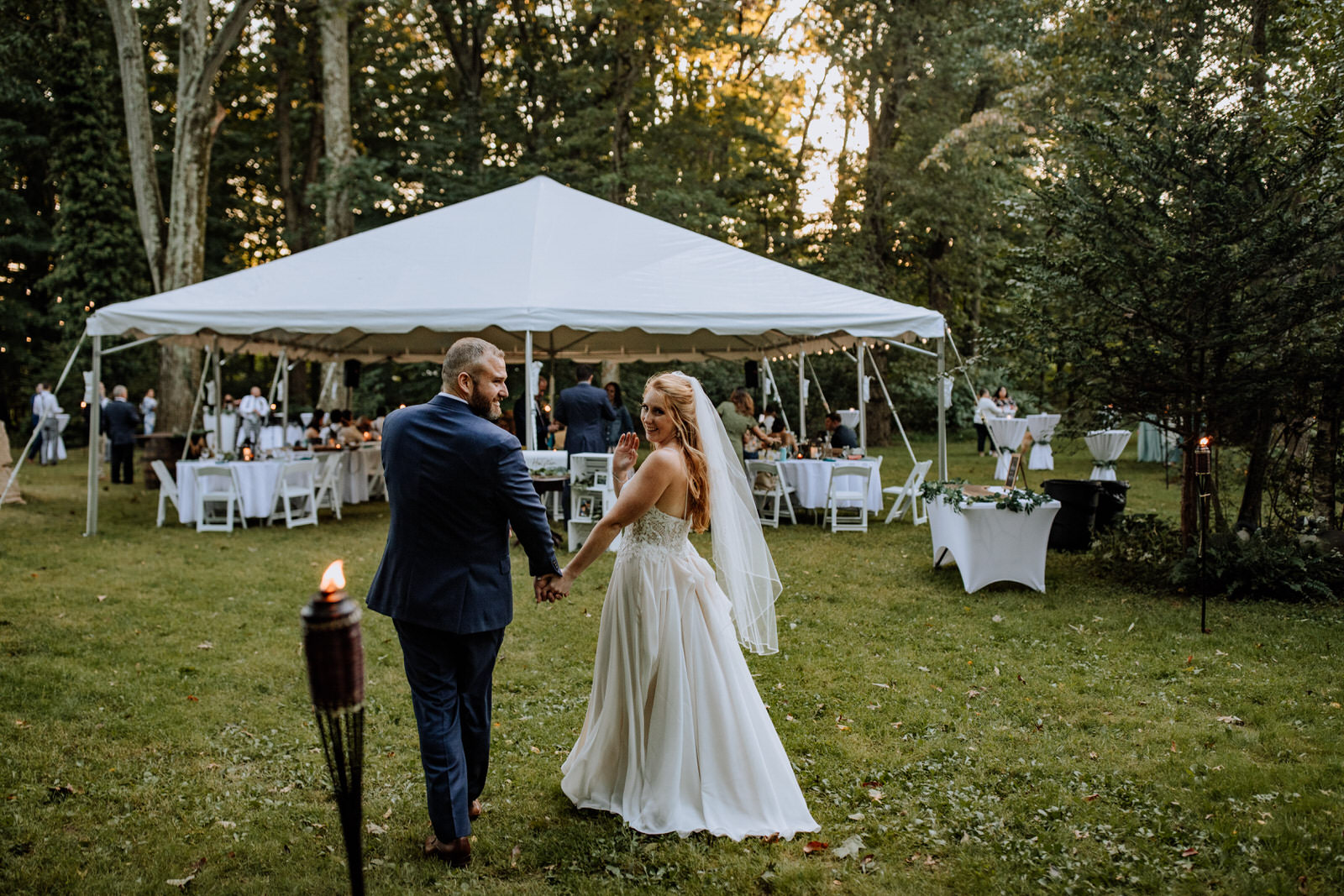
One of the biggest questions on everyone’s mind today (especially those who are planning weddings for next year) is – “will I be able to have my wedding day in 2021?”
While there is no simple “yes” or “no” answer we can give you, we can tell you that, for the past several months, weddings have been going on around the country and we don’t anticipate them to come to a full stop like they did in the early months of coronavirus quarantine.
In early 2021, we anticipate continued restrictions in place for social distancing, mask usage, and similar. Weddings can absolutely happen with these things in place as we have seen, and still be comfortable, safe, beautiful, and memorable!
The biggest changes that come with 2021 is the positive impacts of the coronavirus vaccine, as well as a reduction in regulations as a result of “coronavirus fatigue”, which may result in more re-openings as a result of economic challenges and personal issues identified on a local level (such as an increase in violence, addiction rates, etc.). These things, paired with an already bettering health care system for treating COVID-19 patients, will likely result in the loosening of restrictions as the year progresses.
Currently, several vaccines are already being actively distributed within our communities, with additional vaccines being prepared for emergency use in the near future.
Along with the vaccines, increased testing capabilities are also influencing government mandates that impact weddings. In January 2021, New York has updated its regulations to allow (beginning in March) for weddings up to 150 people with testing. We expect similar regulations to play out in surrounding states such as Pennsylvania and New Jersey, as these 3 states have frequently been making decisions in collaboration with one another as their economies are very closely connected.
The bottom line: weddings will go on in 2021, restrictions or not, and all of the other features of a wedding day will still be there. From expressions of love, fondness for family & friends, to the beauty that resonates throughout these days.
The Rising COVID-19 Wedding Trends: Elopements & Micro-Weddings
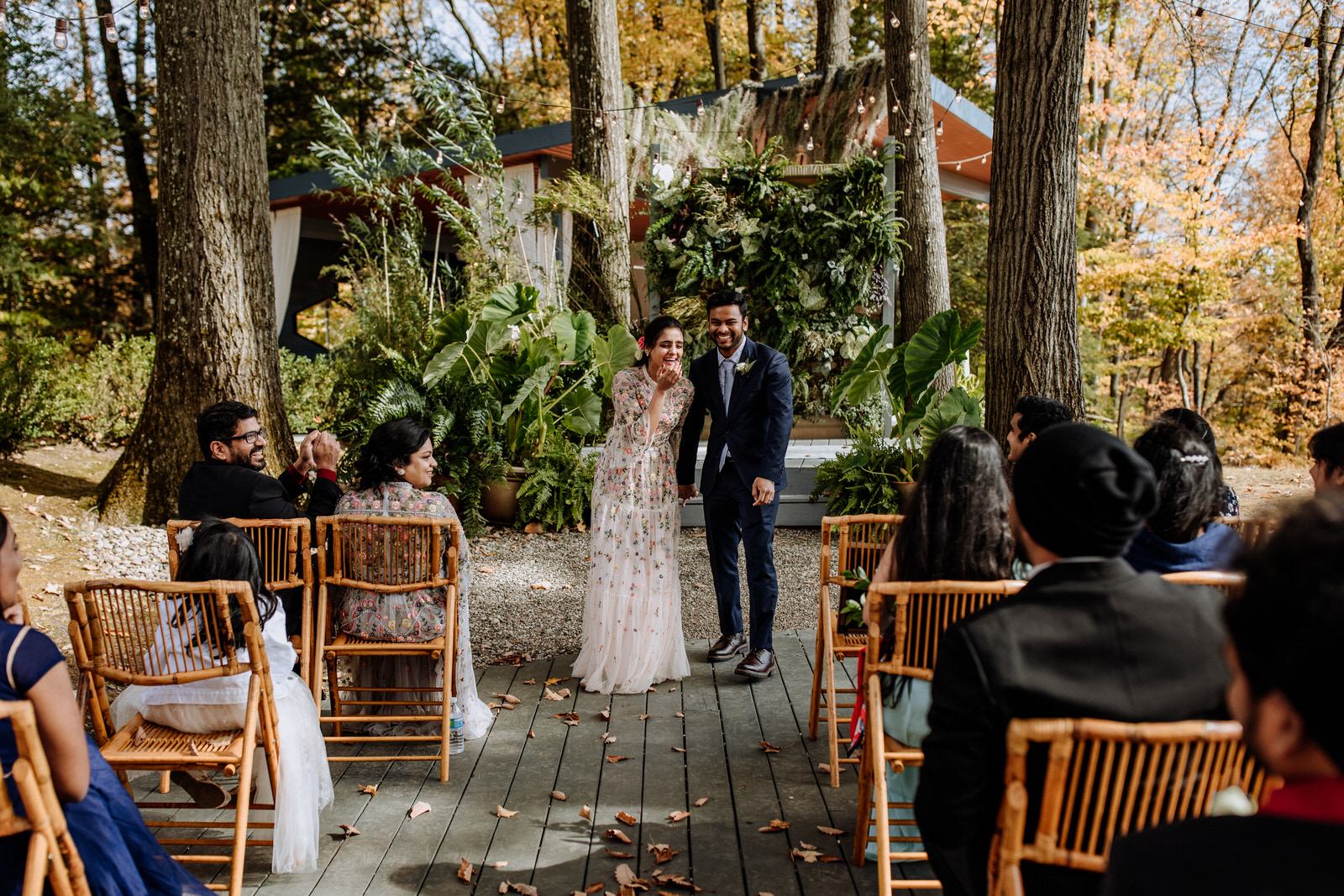
Coronavirus brought about an increased popularity of elopements and micro-weddings. These were both things already growing in popularity over the years, but have become imprinted on everyone’s consciousness in 2020 as they became not just wedding alternatives, but the only options available.
The way we see it, there are 3 small scale ways to tie the knot during (and after) the pandemic: self-uniting ceremonies, intimate guest elopements, and micro-weddings.
Self-Uniting Elopements
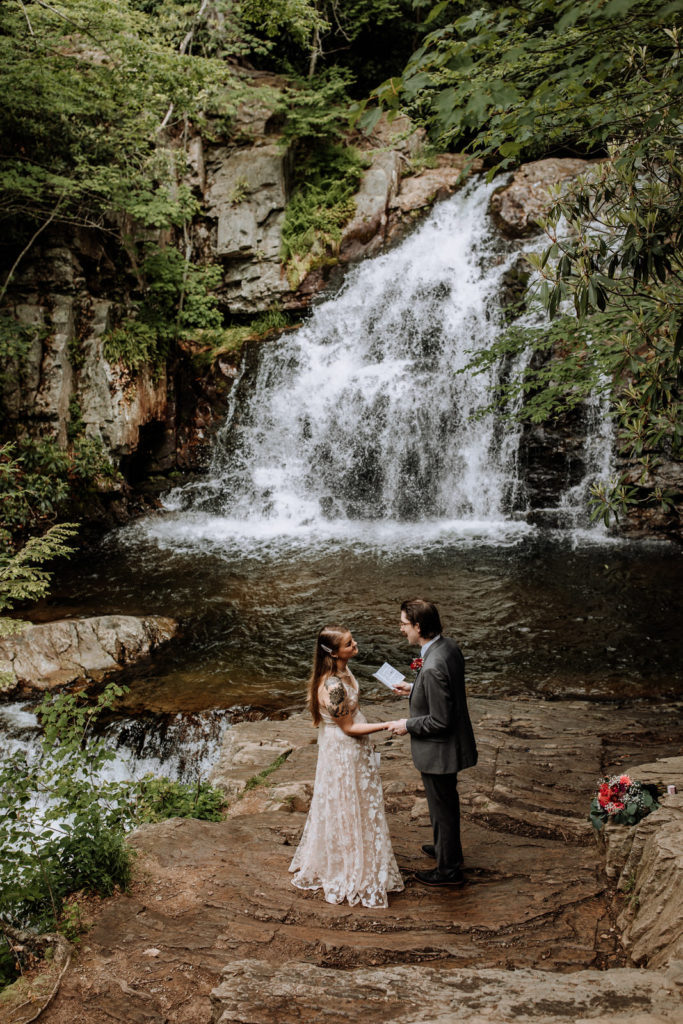
A self-uniting marriage (also known as a “Quaker marriage”) is the simplest wedding alternative. It is, honestly, our favorite to get to be witnesses to – because it is just the couple and us there to document this milestone moment (and sign the marriage certificate as witnesses).
Self-uniting marriages are only recognized in a handful of states: California, Colorado, Washington DC, Illinois, Kansas, Maine, Nevada, Pennsylvania, and Wisconsin. Specific local regulations may apply, but in our experience couples are able to “marry themselves” (without an officiant) and just require the signature of two witnesses to “make it legal.”
To see what a self-uniting elopement looks like in pictures, check out this post. We have been regularly photographing these special elopements, and even signing our couple’s marriage certificates at the end!
Intimate Guest Elopements
Some couples choose to elope with close family & friends in attendance. This will normally be up to ~10 people max. They may also have an officiant such as a church pastor or non-denominational celebrant to guide the ceremony.
For some elopements, couple’s may also opt to have a family member or friend officiate their wedding. While it’s easy to get officiated (it can be done online in most states and is often free or inexpensive), we suggest these people to participate in Celebrant Academy – a tool for education on these crucially important milestone events.
Good to know: elopements (of any size) can take place virtually anywhere. We offer elopement photography packages and support our couples in finding a location that will resonate with them. In 2020, we’ve seen a sharp increase in little elopements taking place outdoors in nature amongst the woods and waterfalls. It’s a beautiful alternative to traditional venues.
Considering an elopement and interested in having us along to document your journey together? Please reach out to us to chat!
Micro-Weddings
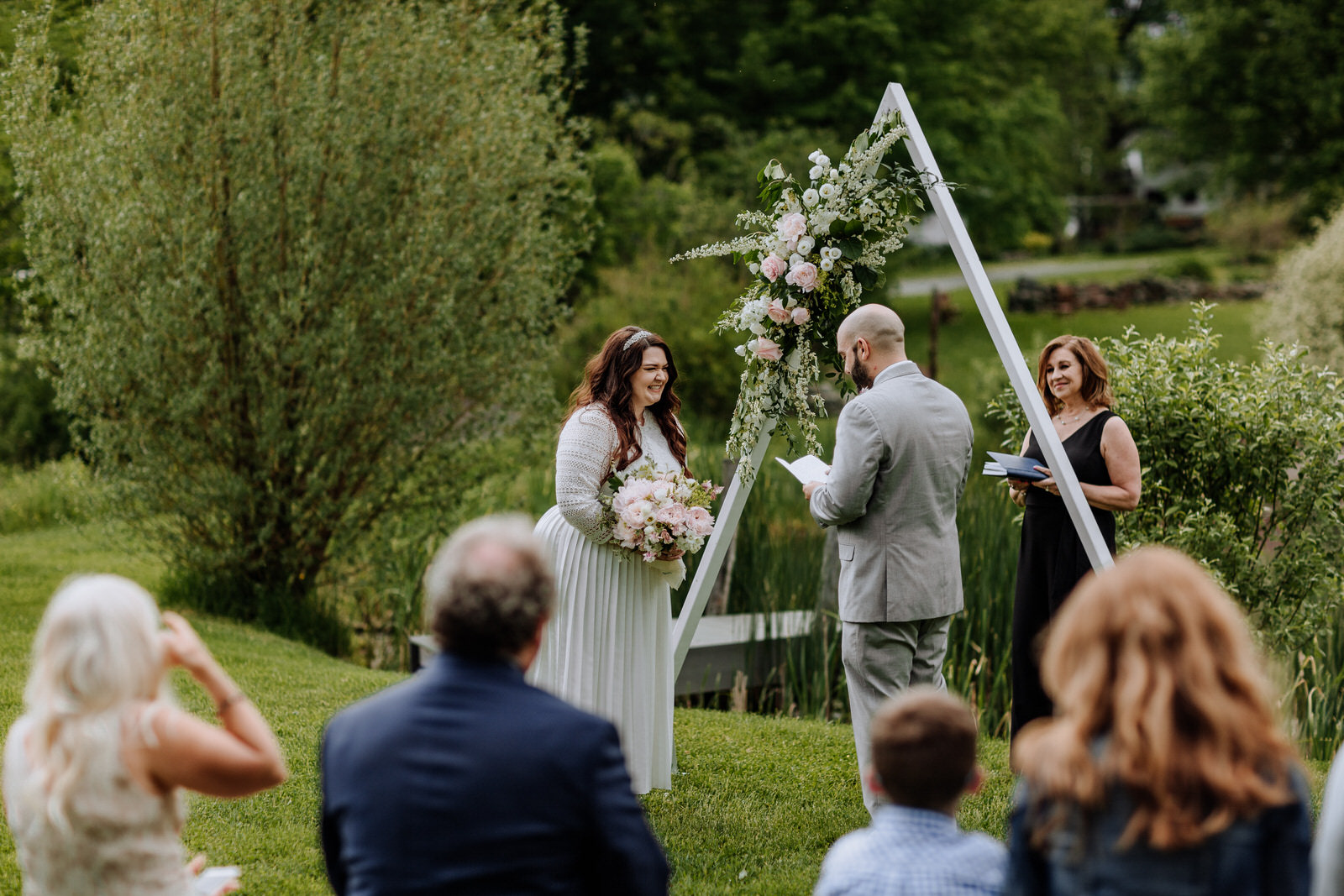
Micro-weddings typically maintain all of the regular wedding day events with smaller guest counts. While there is no standard definition for what makes a “micro-wedding”, we consider a wedding a “micro” wedding if they have ~25 guests and take place at a designated wedding venue. Sometimes (but not always), these more intimate weddings will also take place over a smaller window of time.
In 2020, more and more wedding venues began offering micro-wedding options to couples looking to tie the knot. Some wedding venues specialize in smaller gathering sizes as dedicated micro-wedding event spaces. A beautiful and popular one to mention would be Promise Ridge nestled right into the Poconos! Check out this New York Time’s article about the smaller wedding shift.
In Pennsylvania, we know of quite a few incredibly beautiful micro-wedding venues that specialize in offering couple’s an unforgettable experience – even in light of the coronavirus. A few of these include:
Thinking about eloping or having a small wedding in Pennsylvania and need some super sweet photographers? Get in touch!
Coronavirus Wedding FAQ
We have assembled a list of common questions we have been hearing from couples, as well as questions we have been seeing in conversations online that we feel are important to discuss.
Have a specific question about wedding during the pandemic? Feel free to leave a comment at the end of this post.
Is dancing allowed at weddings during the COVID-19 pandemic?
Generally, open dance floors are discouraged. Some state and local regulations have outright banned them, while in others they are “allowed”. More specifically, individual wedding venues may allow or disallow open dance floors.
Receptions that allow dancing may limit occupancy on the dance floor, require separation by household, and require masks while dancing.
In some cases, individual couples may be allowed to dance (such as bride & groom first dance, mother & son dance, father & daughter dance) while other guests spectate.
Restrictions on dancing will very likely ease with increased vaccine distribution and testing.
Can a wedding be held at a church or other religious place of worship?
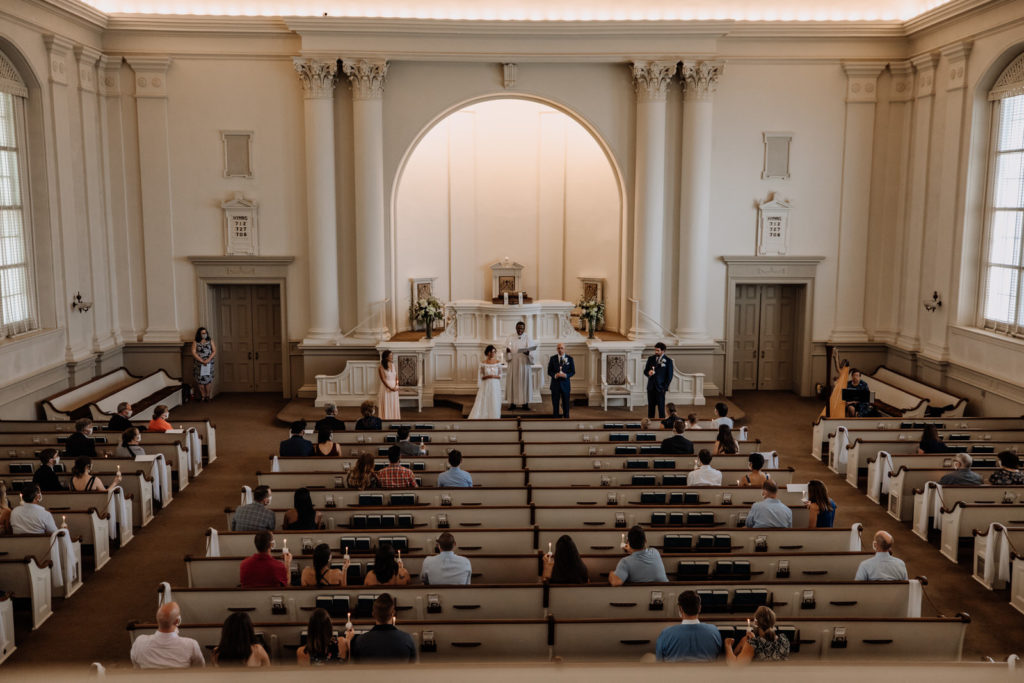
In most places – yes. While gathering and social distancing restrictions remain in place, churches and other religious organizations are not as limited in what they can and cannot do than other private wedding establishments.
Do coronavirus restrictions influence the layout of my event?
Yes. The layout of your reception event may be altered to accommodate more spacing between tables and less opportunities for people to be walking closely by each other. This is somewhat dependent on the specific venue as to how significantly this will influence your wedding.
We highly suggest consulting your venue to see how they are handling this.
Can I have buffet style dinner at my wedding?
No. At all weddings we’ve been too, dinner has been amended to table service only. Buffet style dinners encourage more direct interaction between guests. While there is no evidence that the virus spreads through food, having large groups populate in the same areas (around the food) one after another is a risk that many venues do not allow for right now.
Are there ways to still have a bigger wedding during the pandemic?
Yes. Larger event spaces tend to have less restrictions on the number of people who can congregate. Changing regulations and mandates as 2021 progresses will likely see an easing of restrictions that allow for more people to gather.
Can my wedding be held indoors at all?
Yes. Plenty of wedding events are being held indoors.
In our experience, weddings are comprised of 3 main parts of the day. Here is a breakdown of what these look like with location in mind:
1). Getting Ready. The bride, groom, and their bridal parties traditionally get ready indoors. This may be at home, at a hotel, or in a special suite on site at a larger wedding venue. Preparations continue to happen indoors during COVID-19 pandemic weddings.
2). Ceremony. When possible, ceremonies are being shifted into outdoor spaces. However, some ceremonies (like those in a church) are held indoors.
3). Reception. Larger weddings are being hosted outdoors, though some weddings may still be held in ballrooms and other indoor spaces. The specifics of this really does depend on where you live, but in our observations in Pennsylvania, wedding venues are subject to guest capacity limits dependent on the size of their indoor environments and layout. We recently photographed a wedding at Bear Creek Mountain Resort, which has very large reception spaces that enables them to host larger events (by pandemic standards).
COVID-19 Pandemic Wedding Gallery
Below is a small gallery of photos where you can get a glimpse into the weddings we’ve captured throughout the coronavirus pandemic. We want to show you what weddings look like authentically and uniquely during this time and how couples have been celebrating safely. From backyards to venues big and small, each day we’ve gotten to capture this year still has every one of our couples personalities shining through and most of all – shows off the love, togetherness and celebration of what the day is all about – finally saying “I Do”!
We are the husband + wife photo team behind Hand and Arrow Photography, specializing in the documentation of wedding, elopements and couples portraits in Pennsylvania, New Jersey, New York, and beyond!

